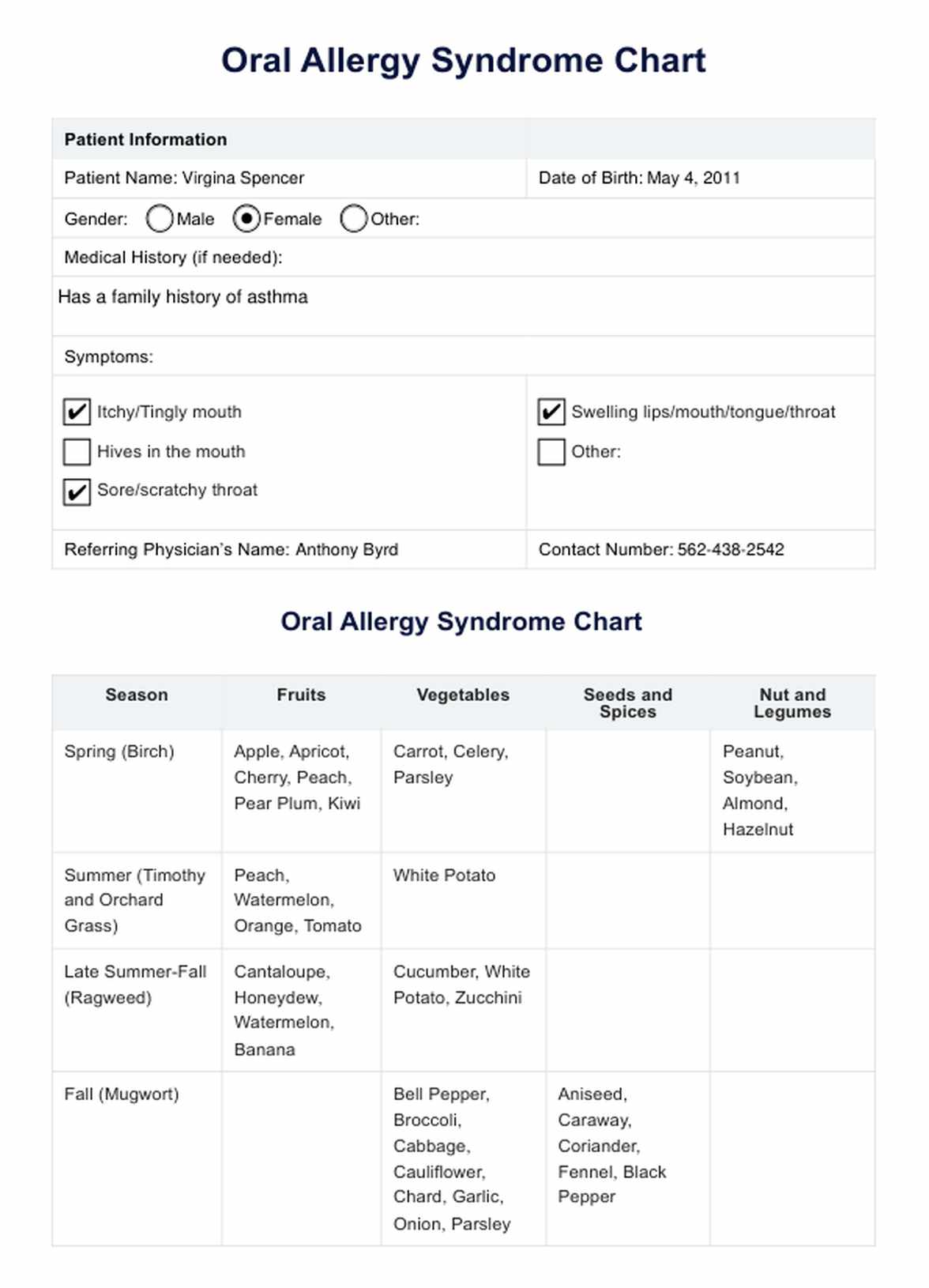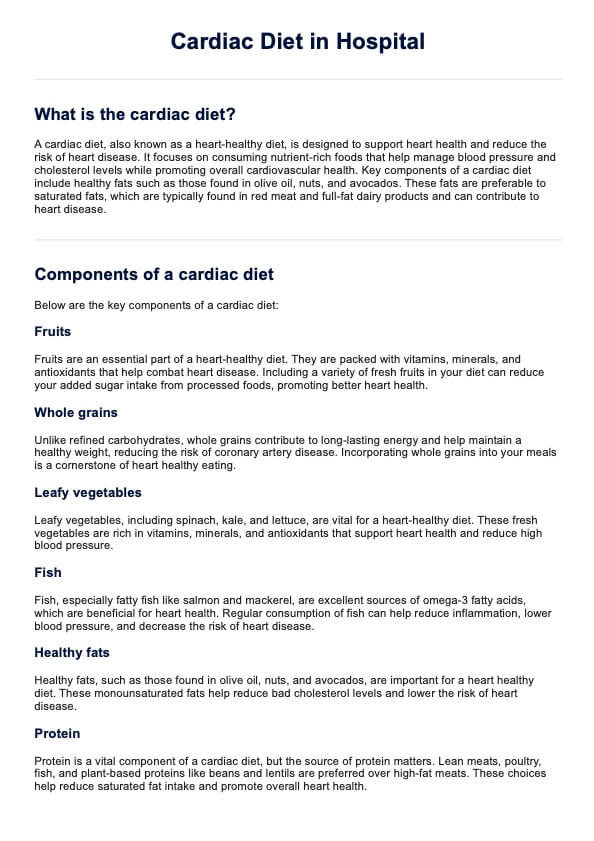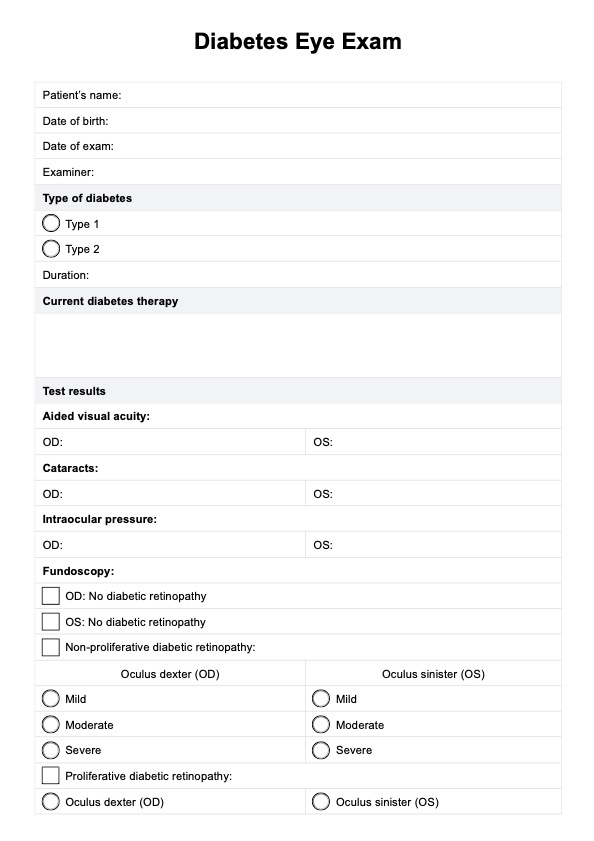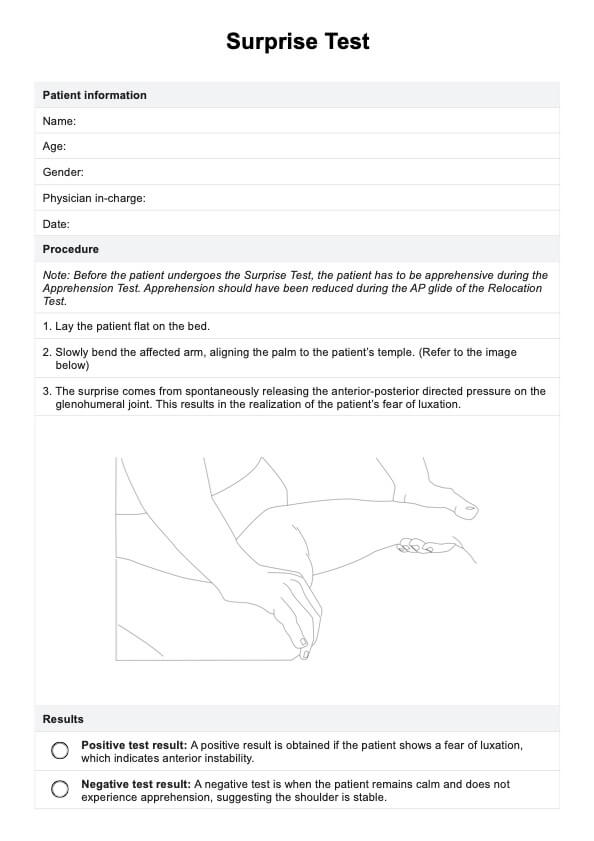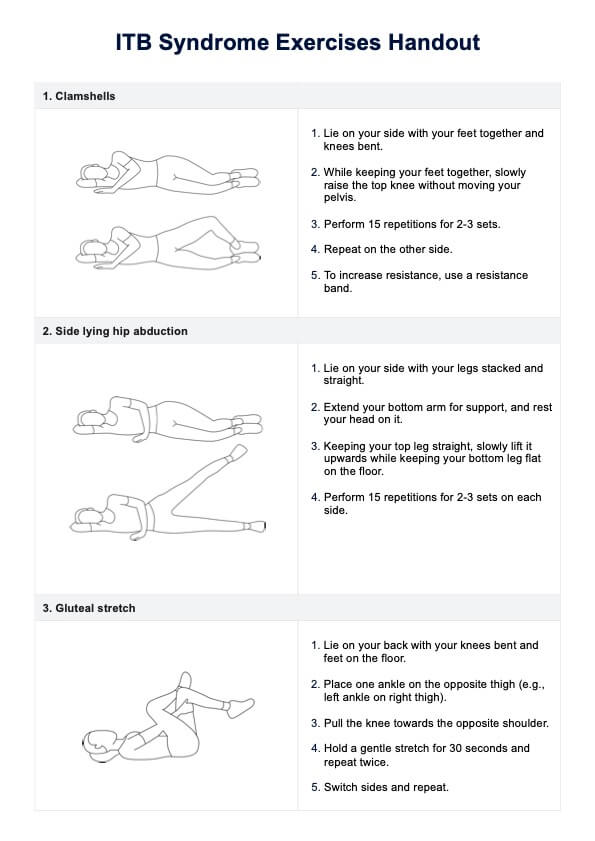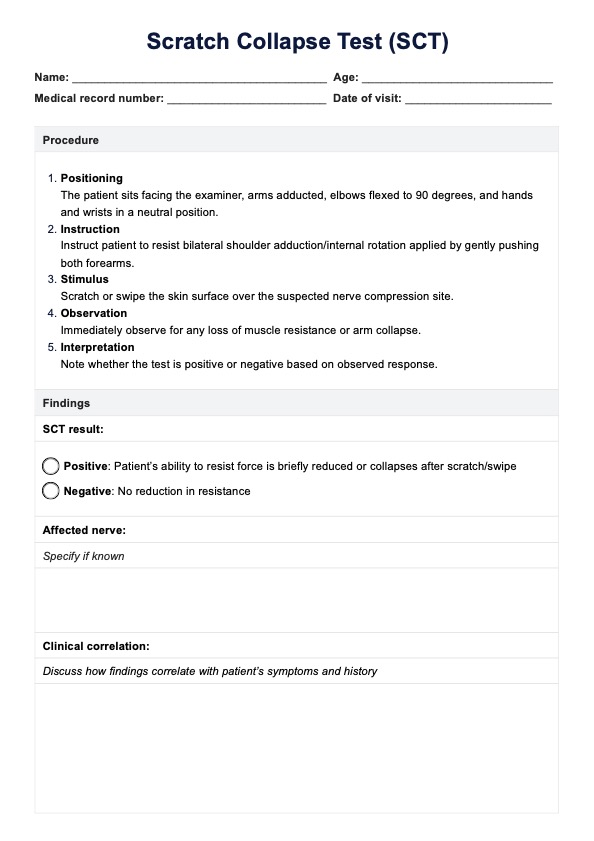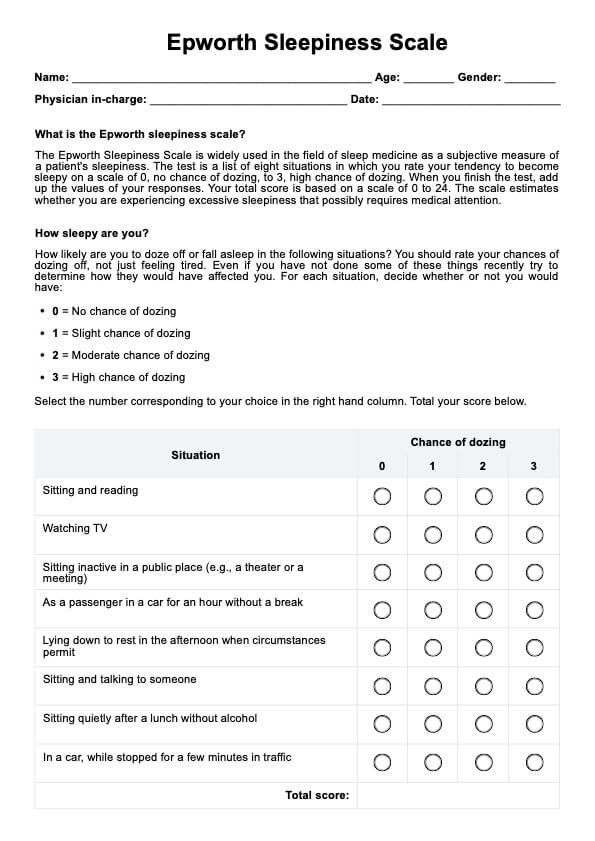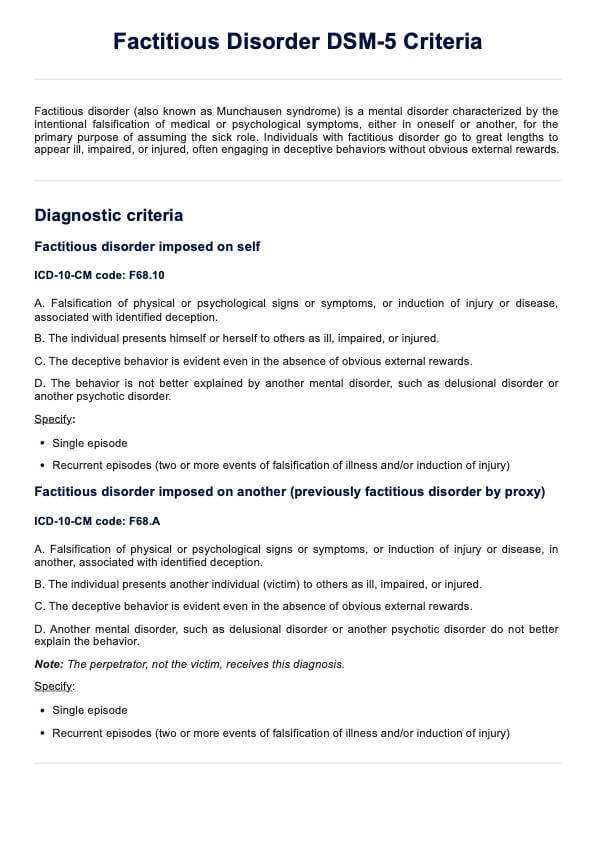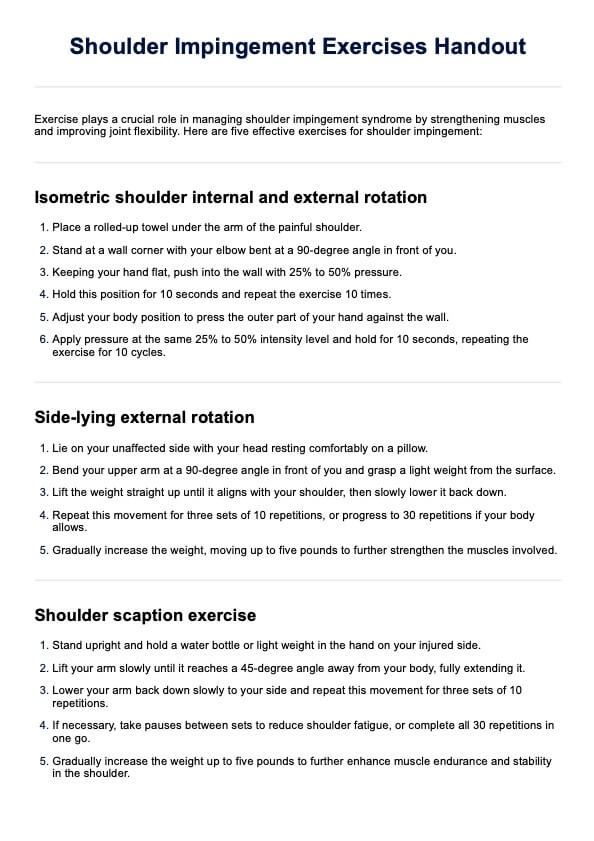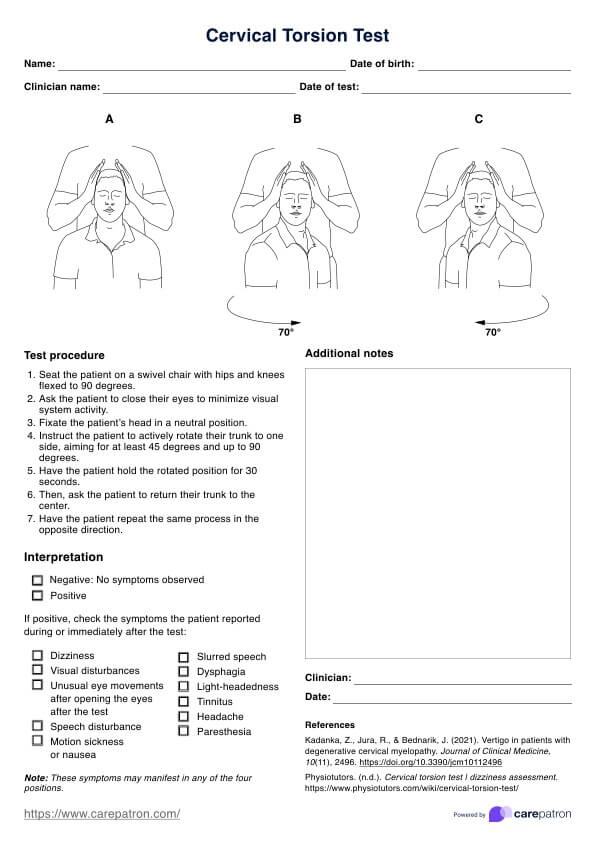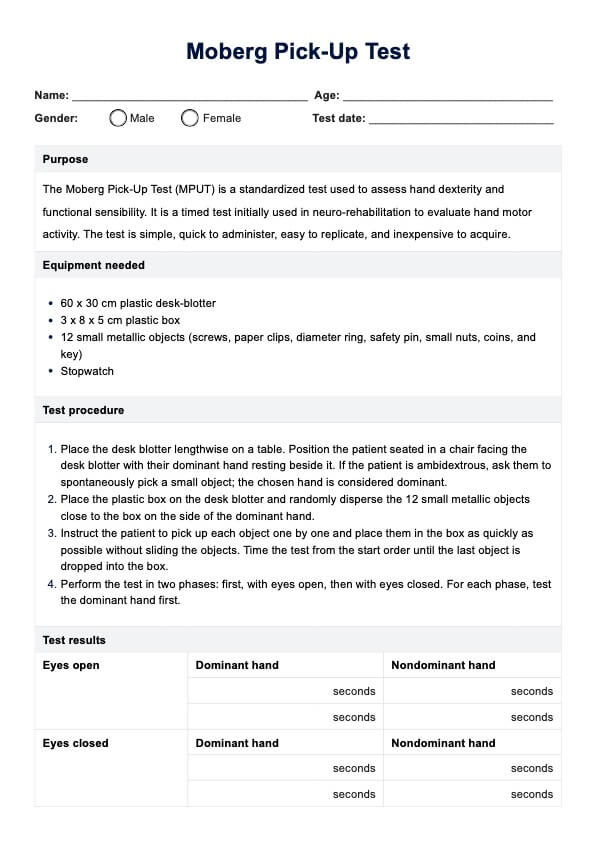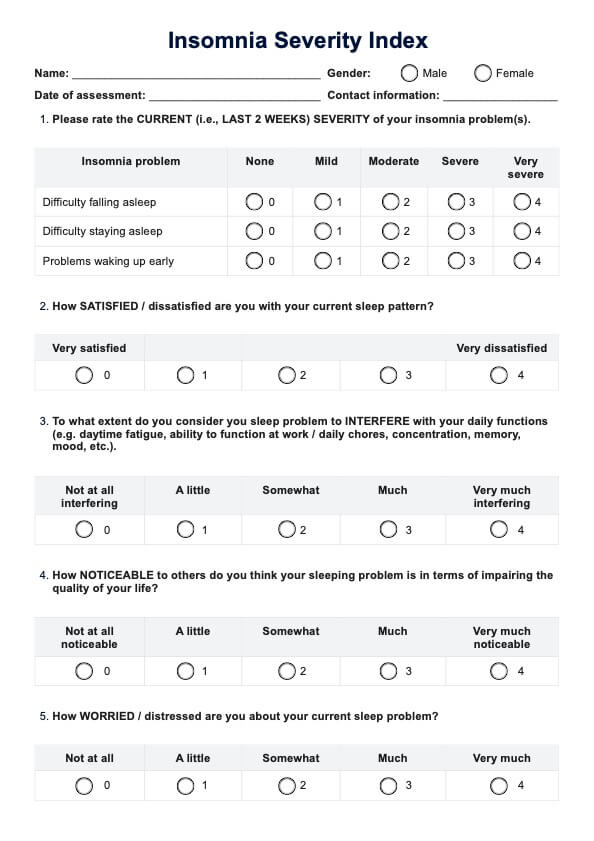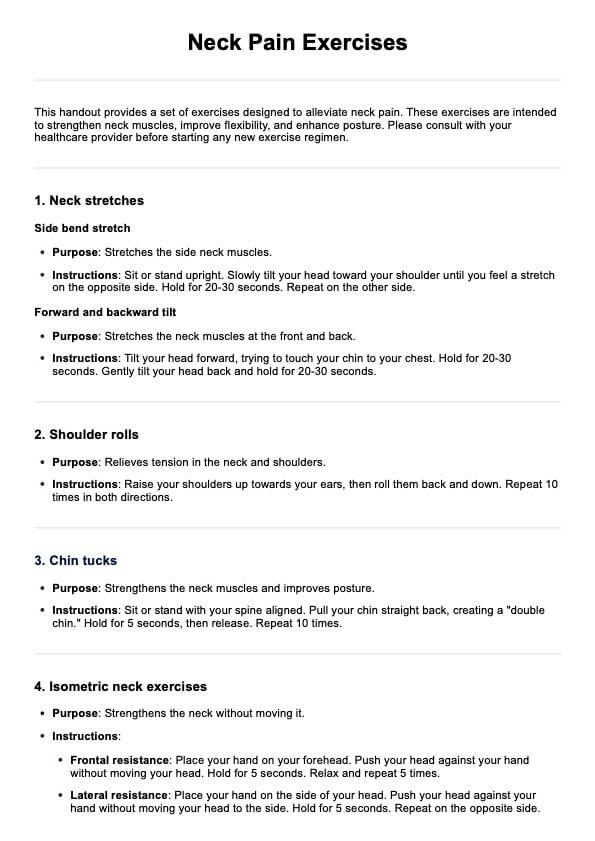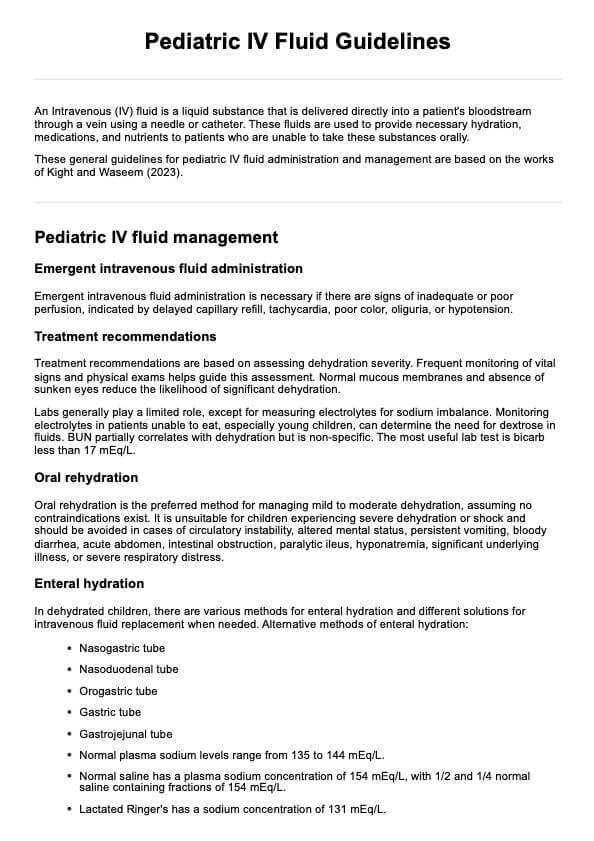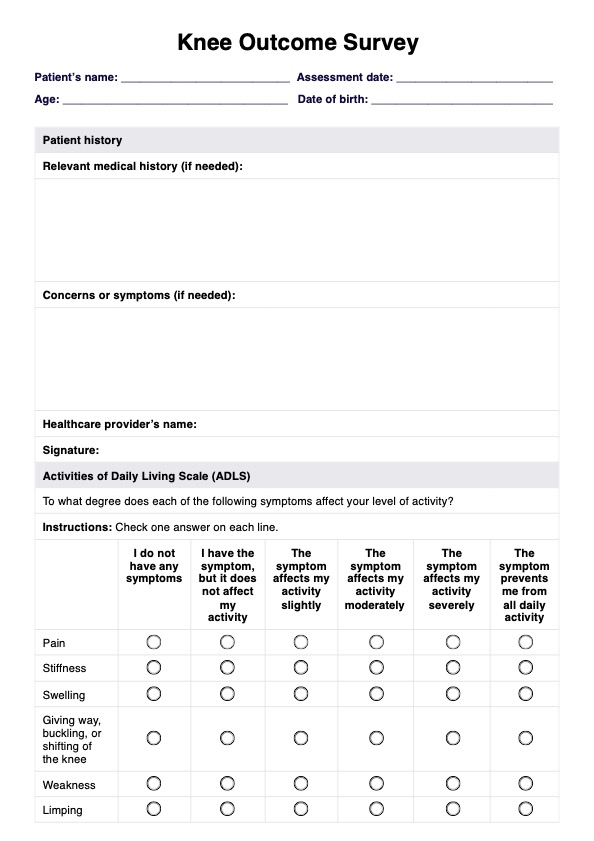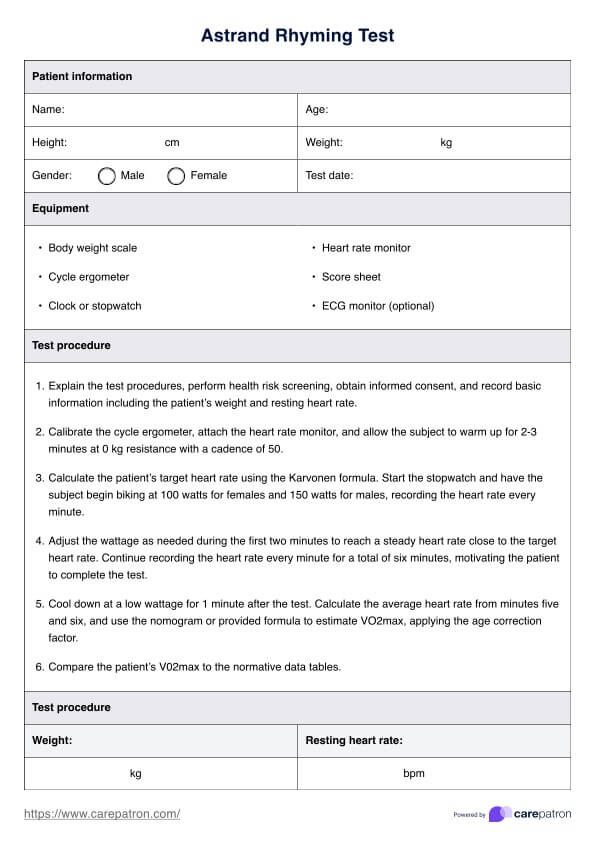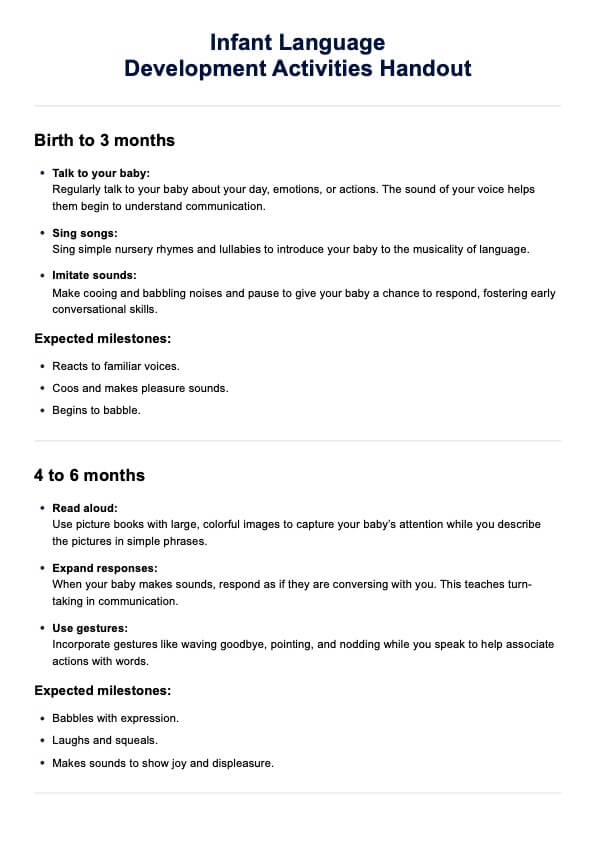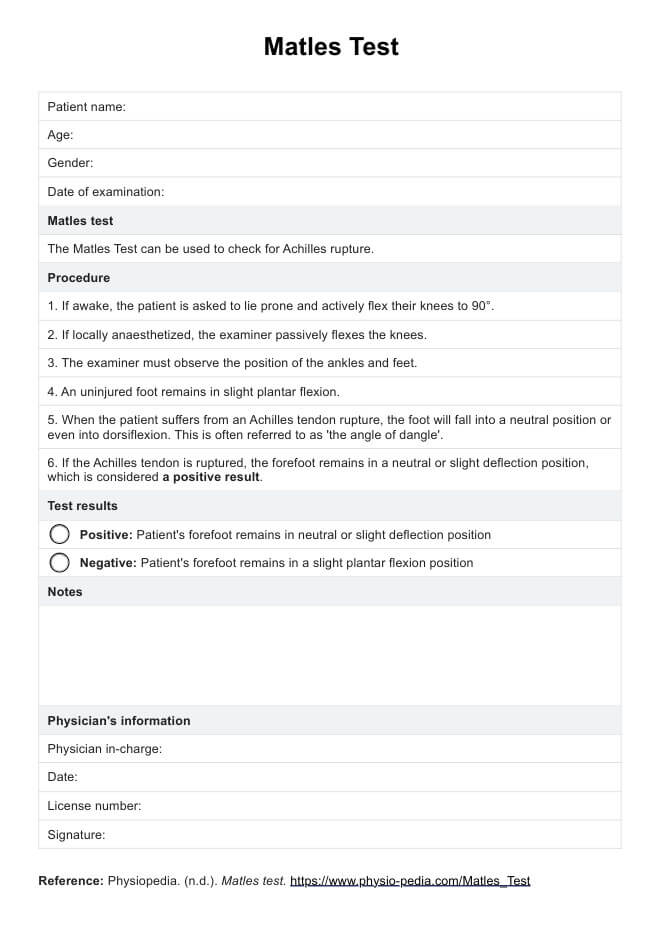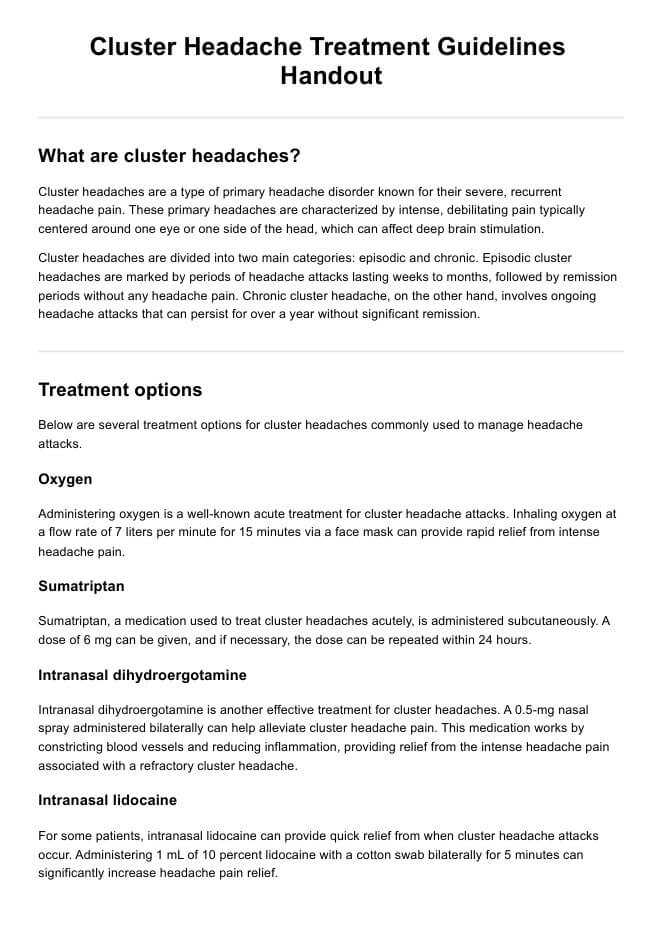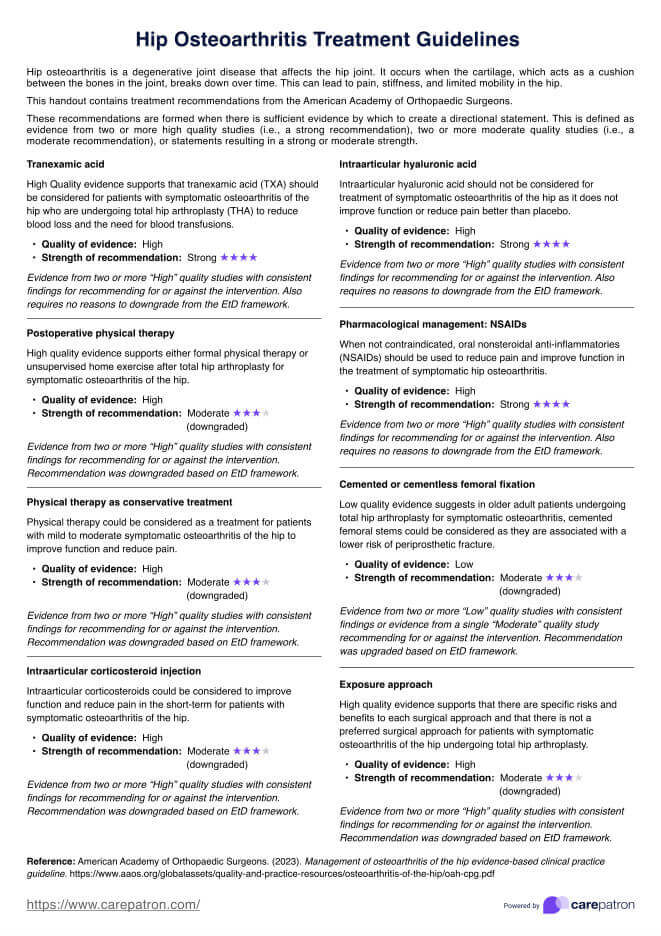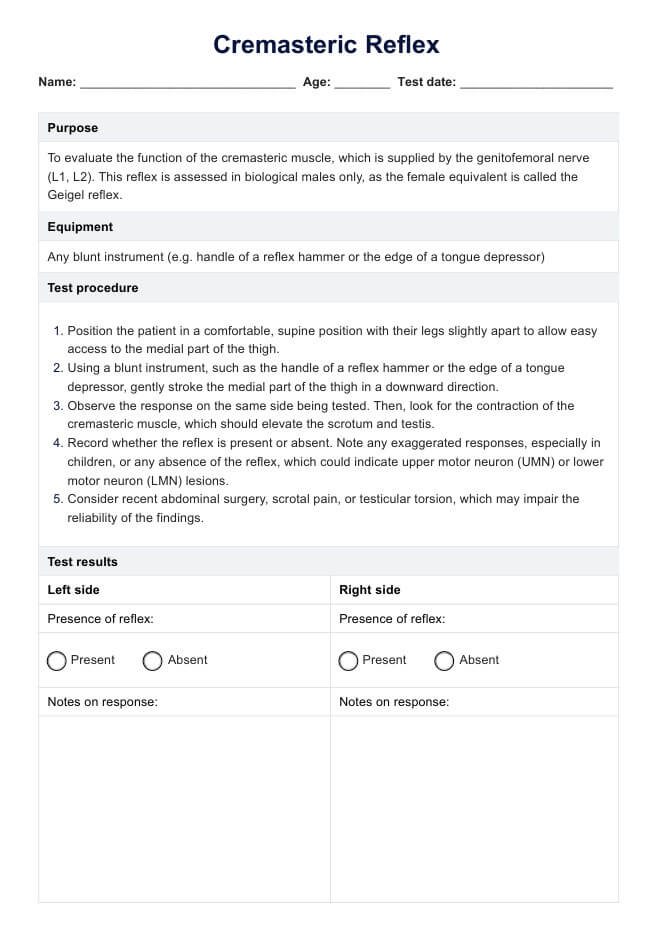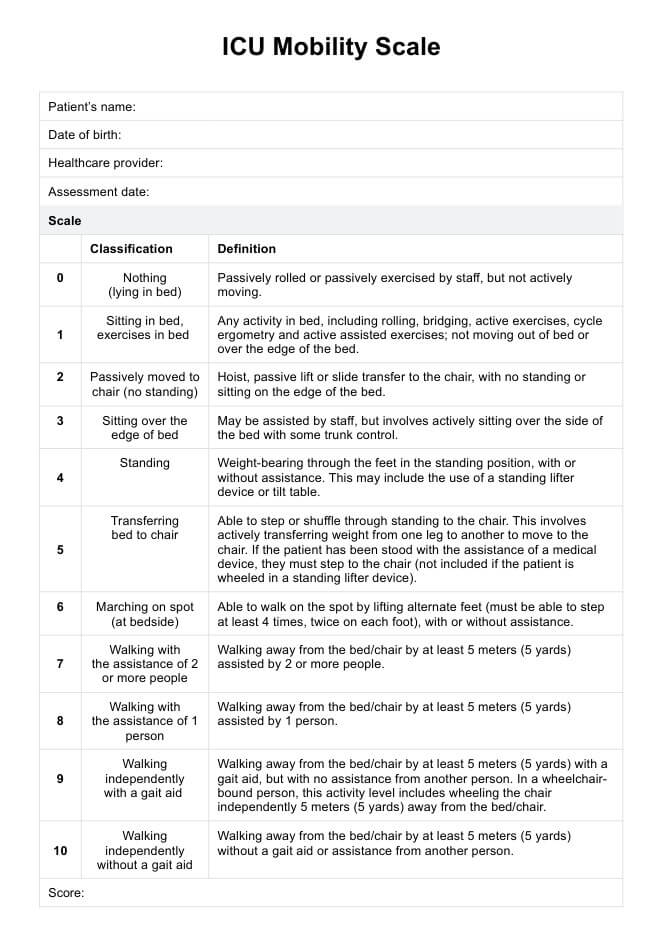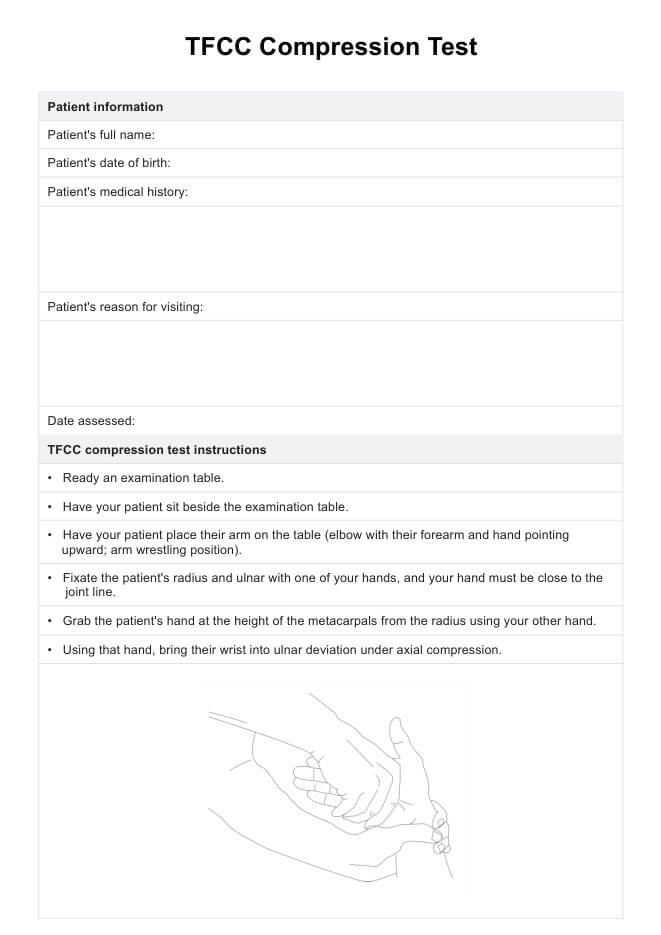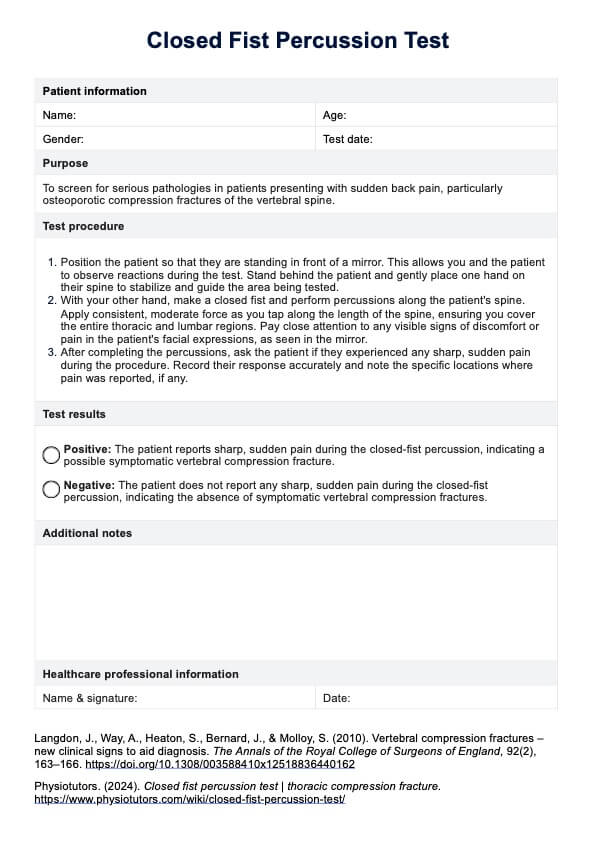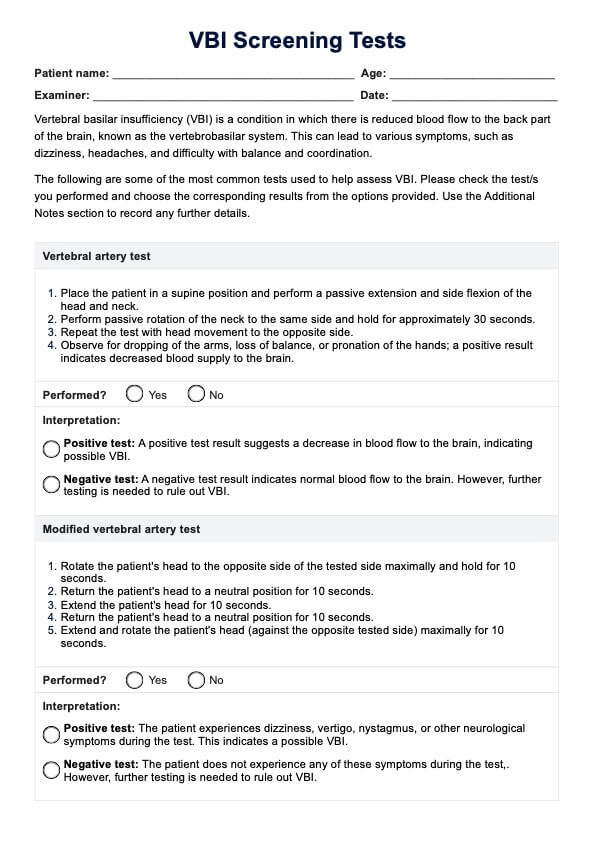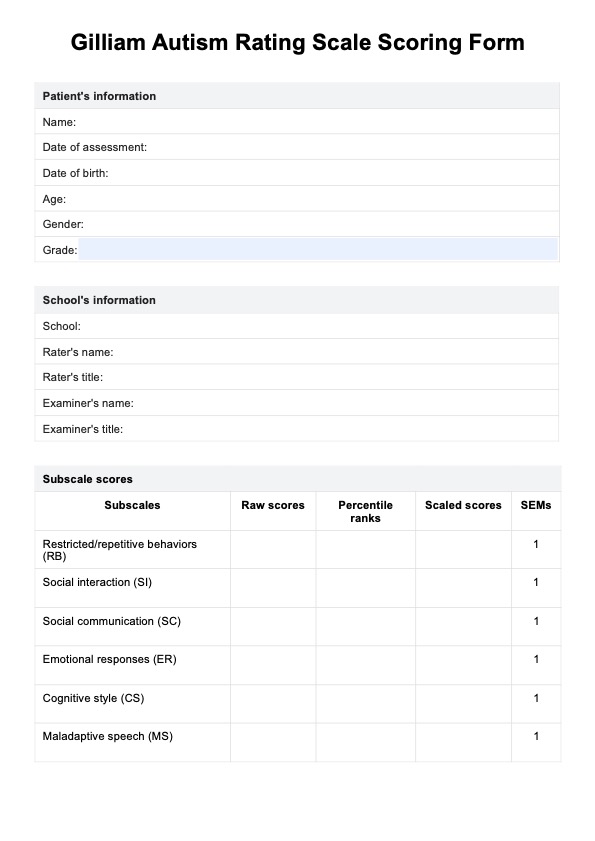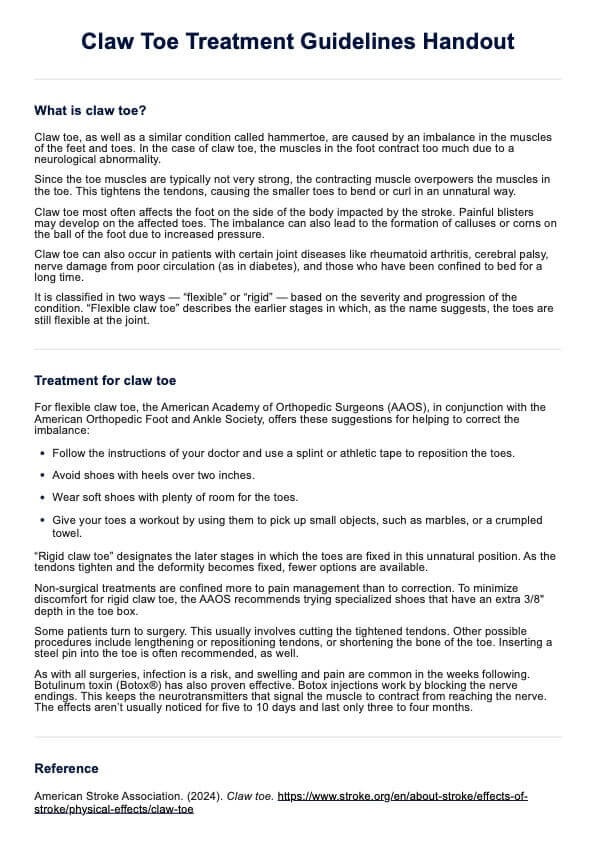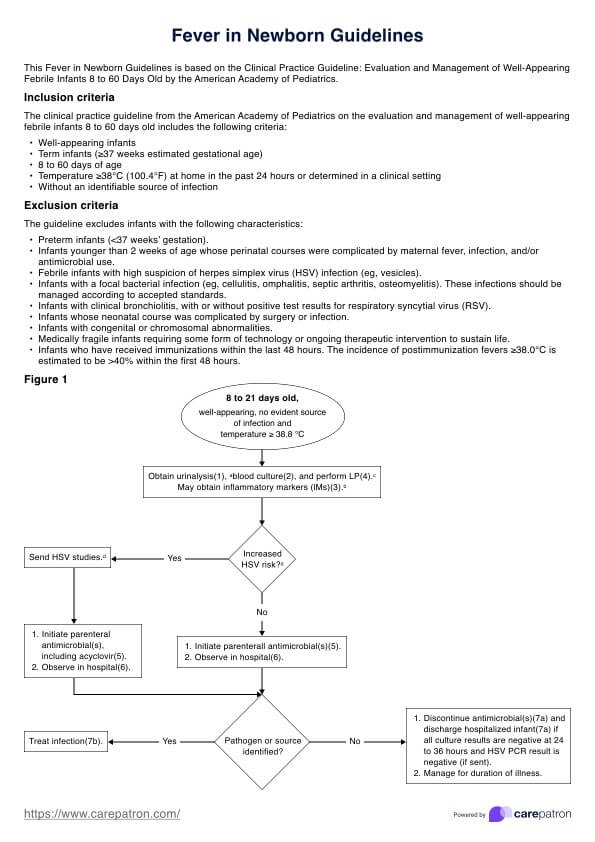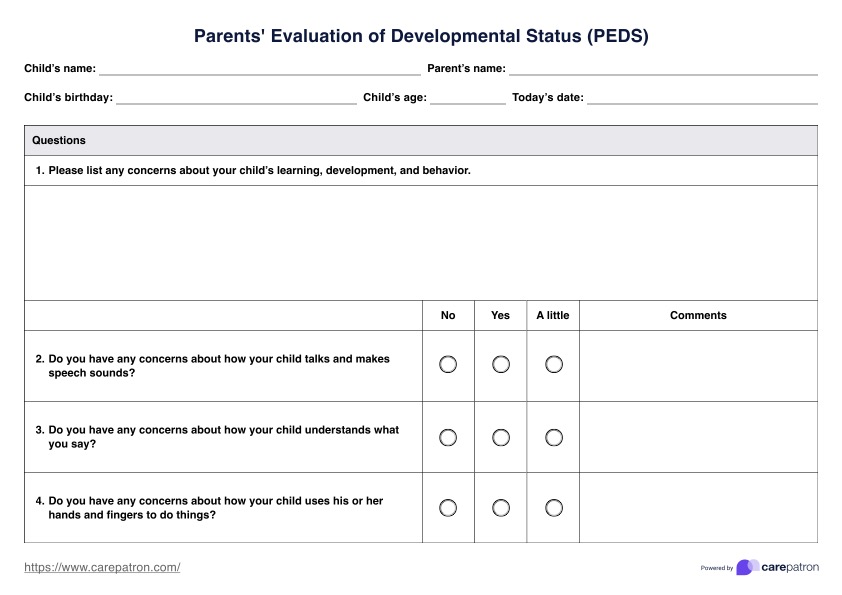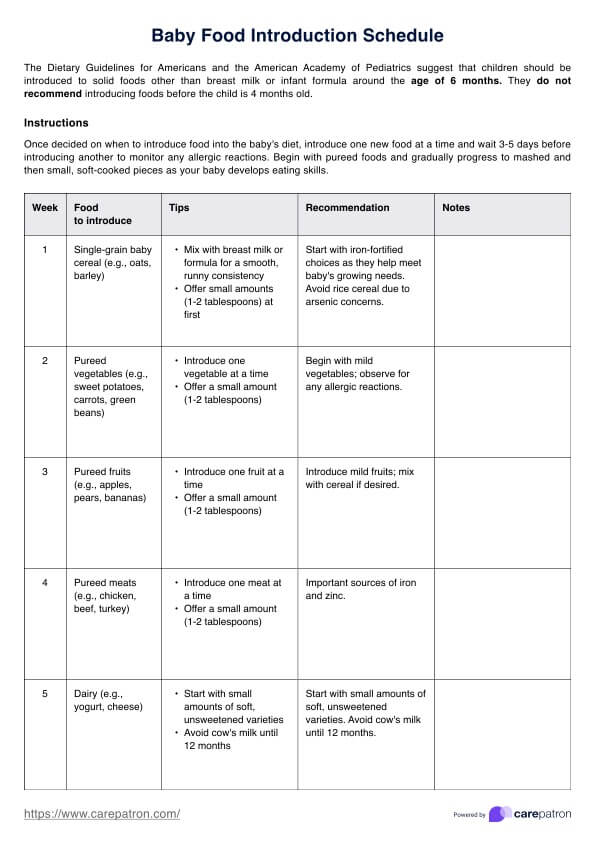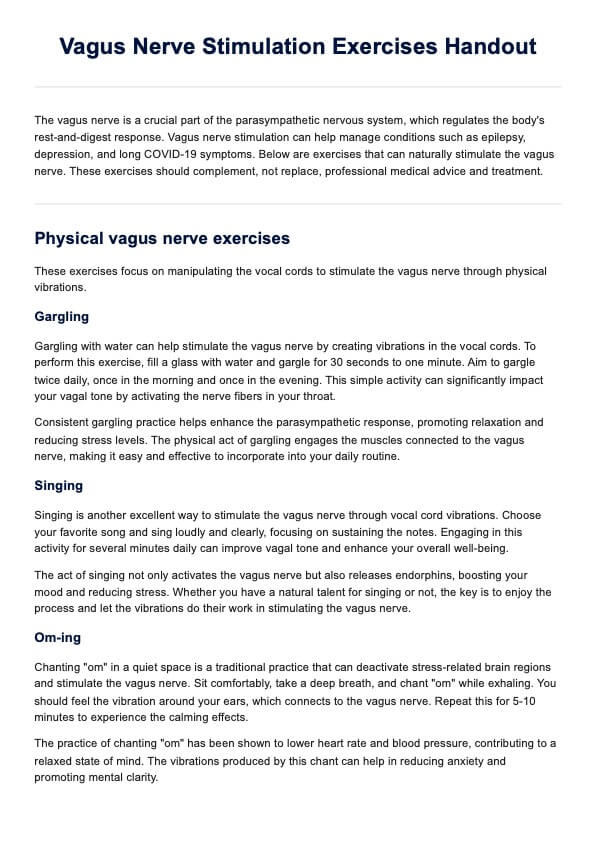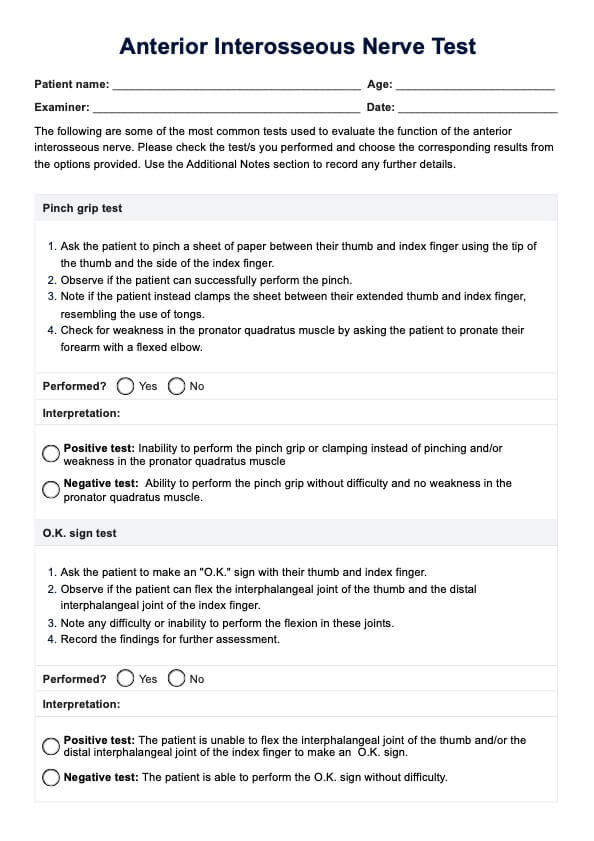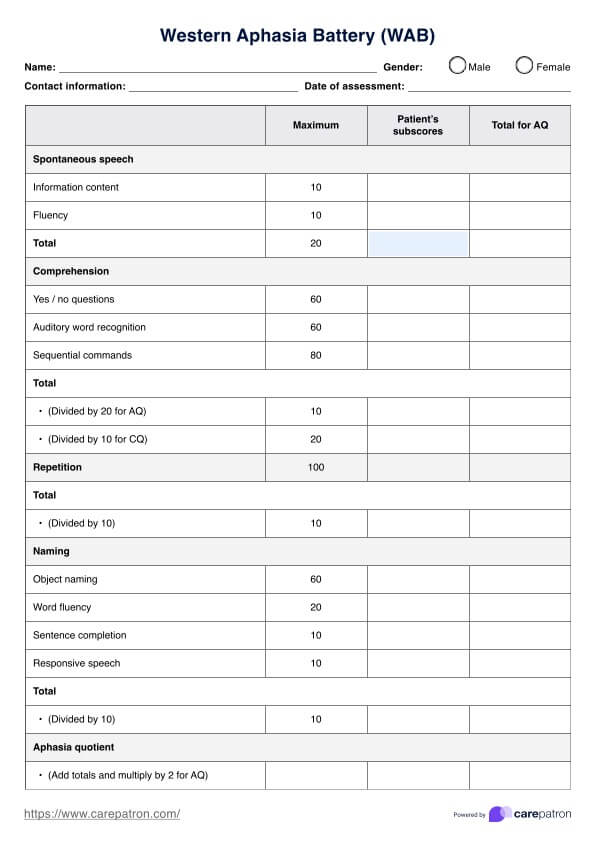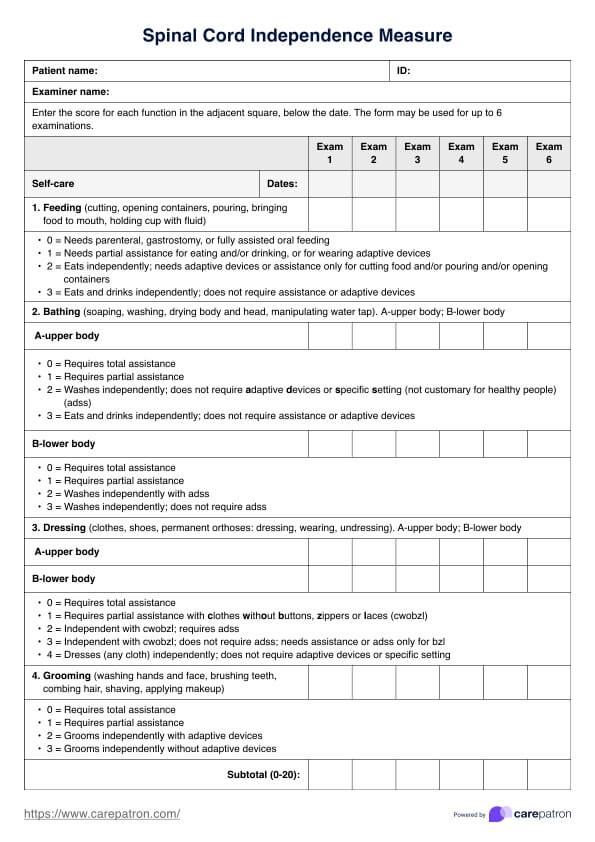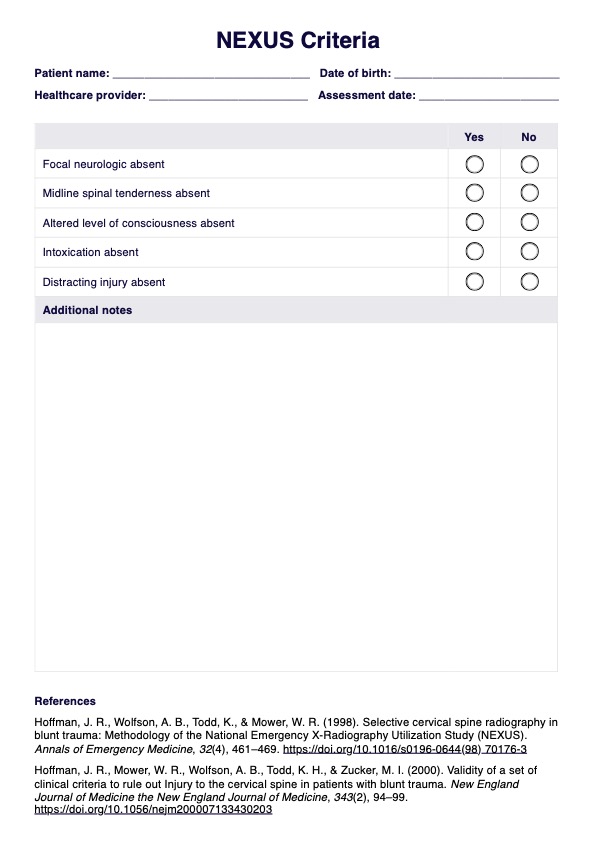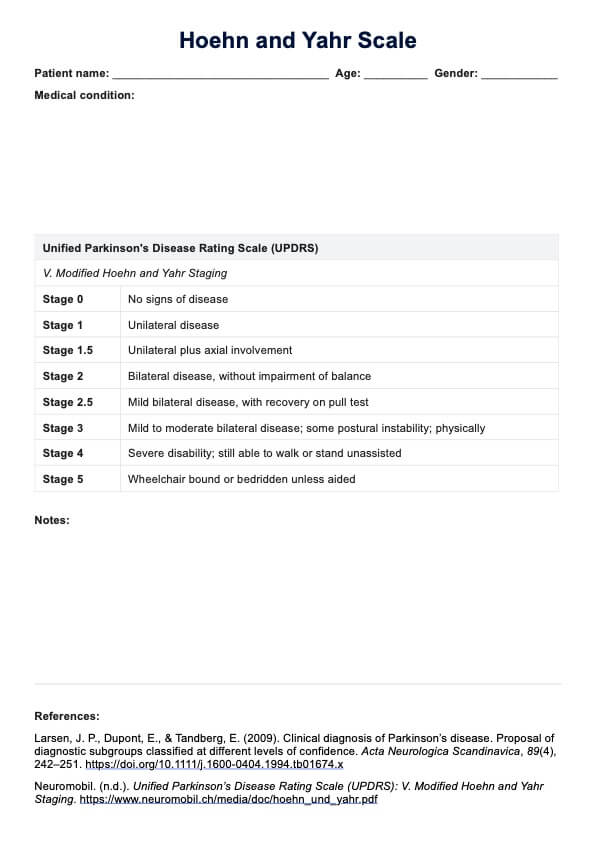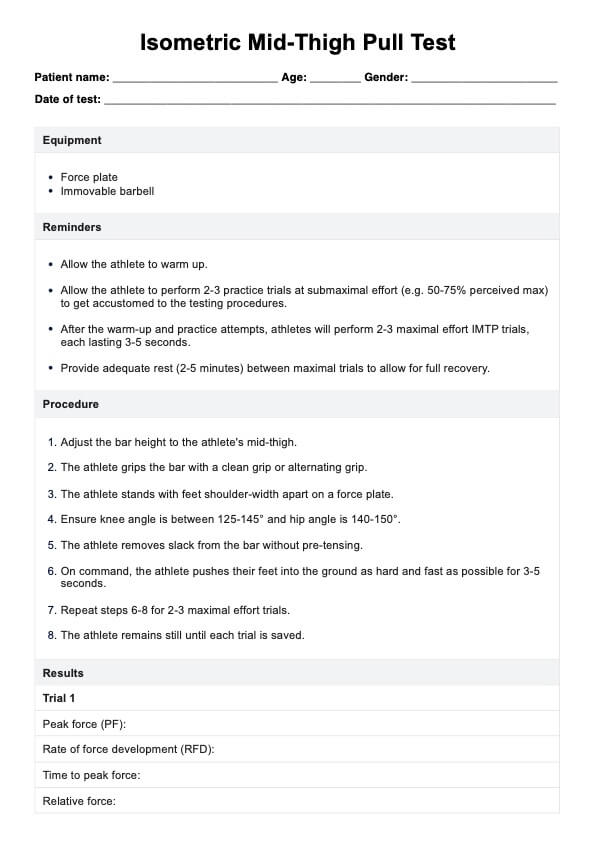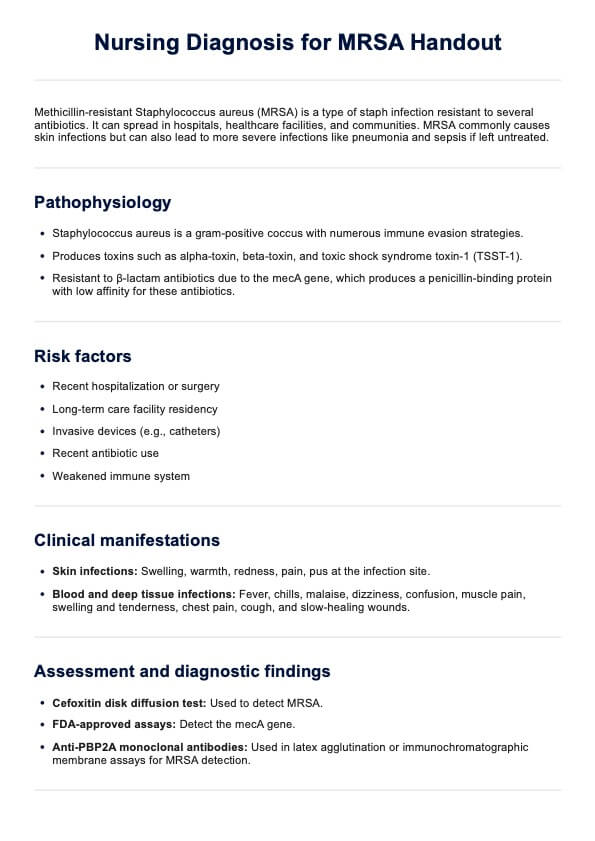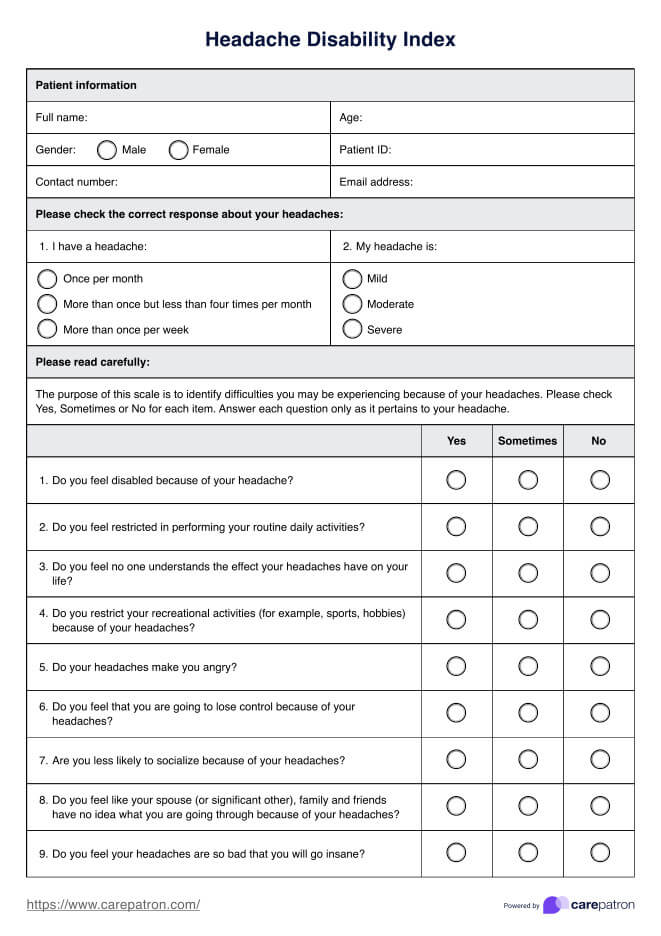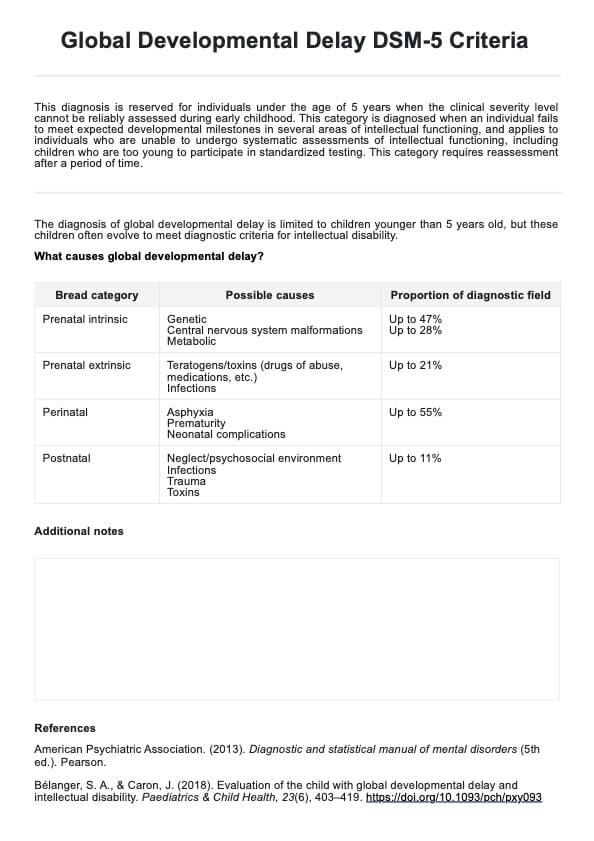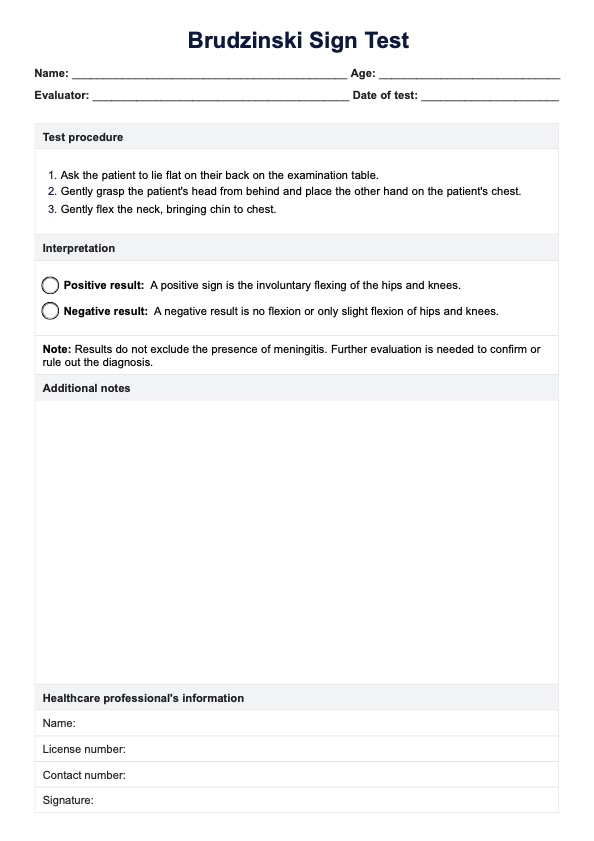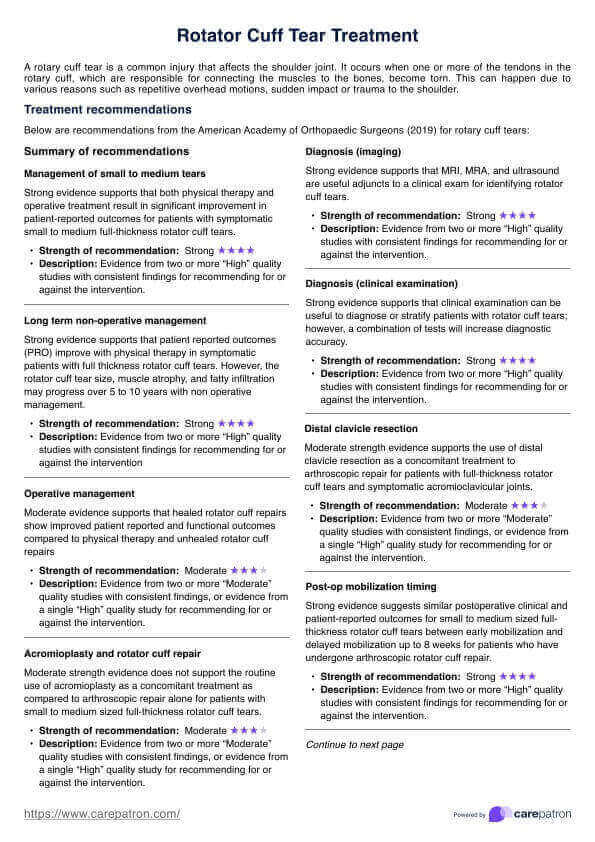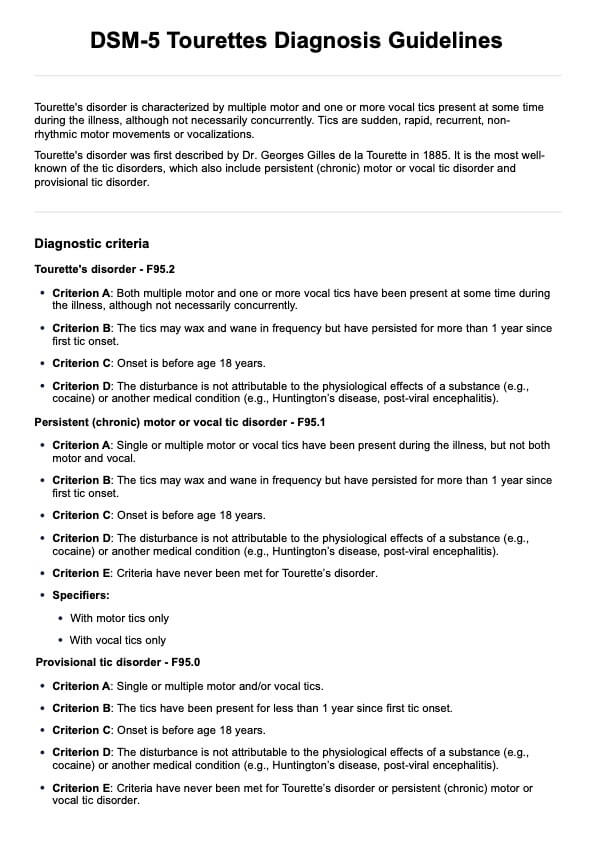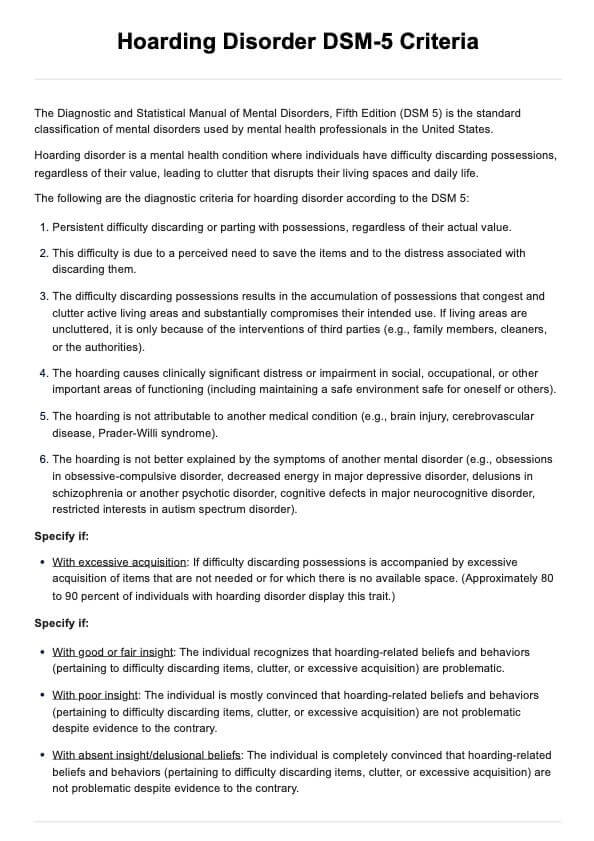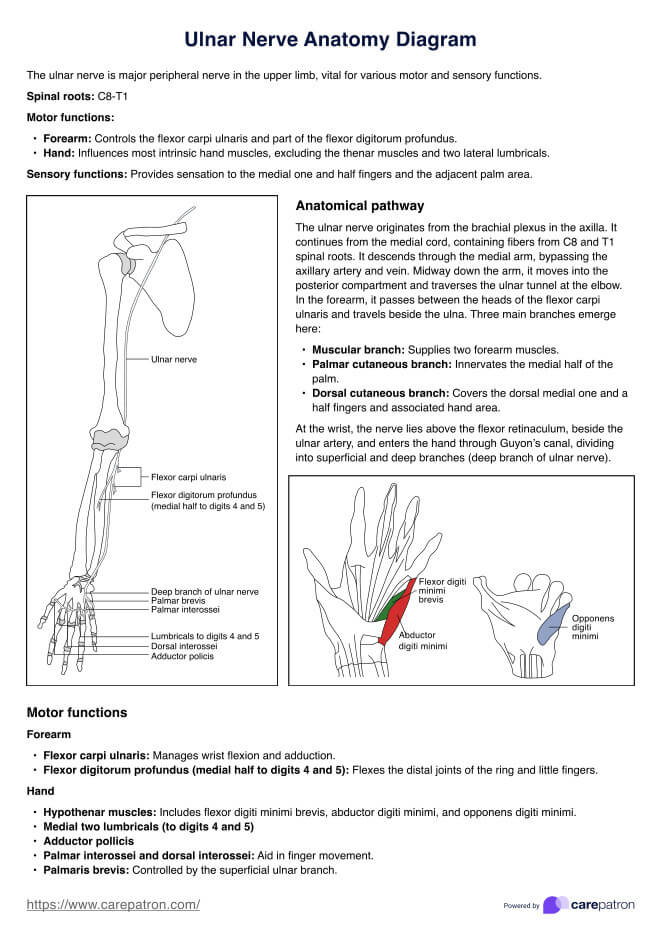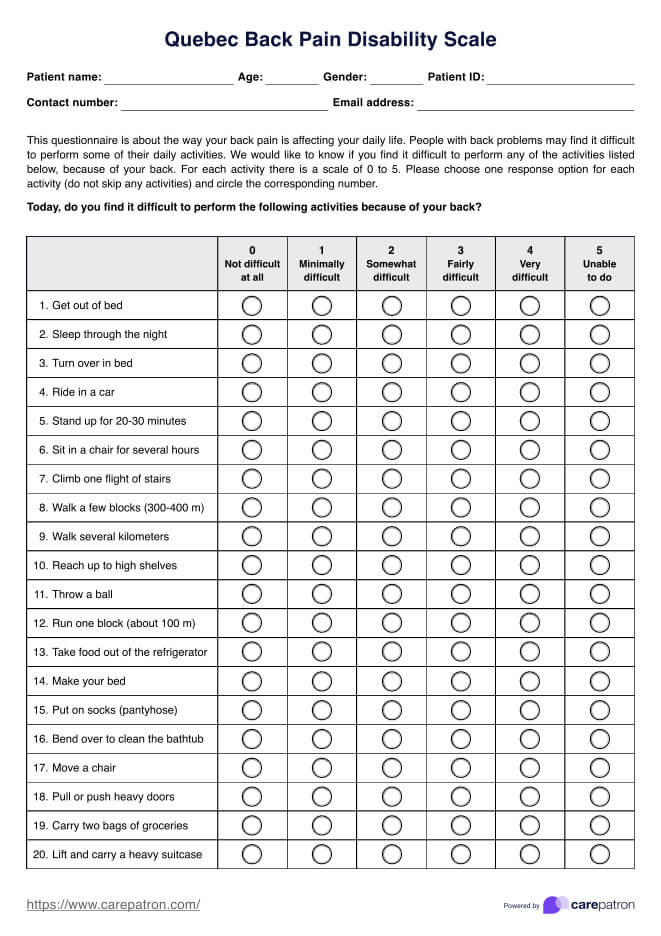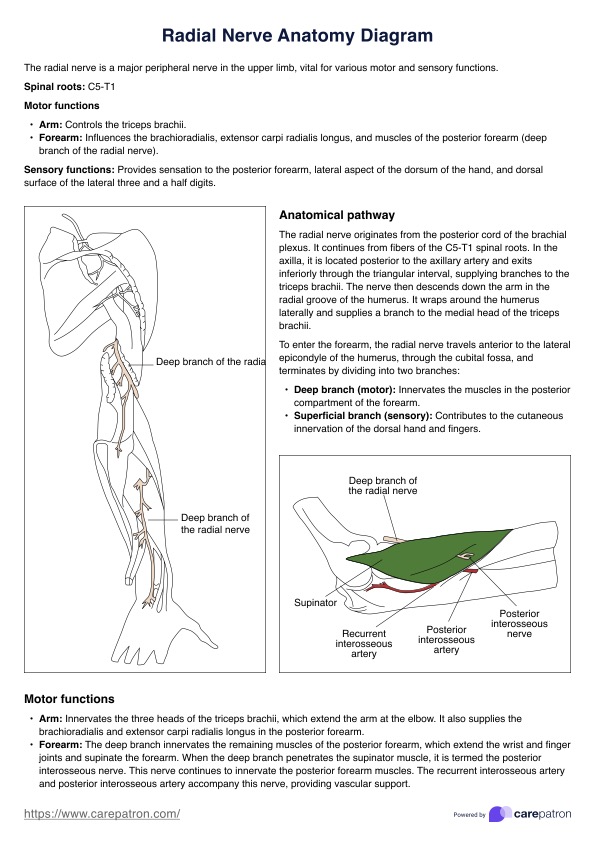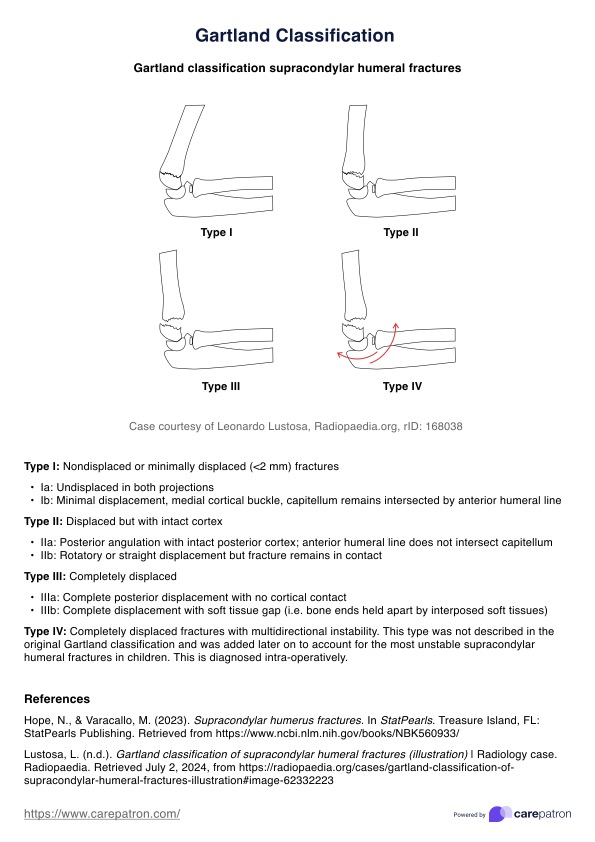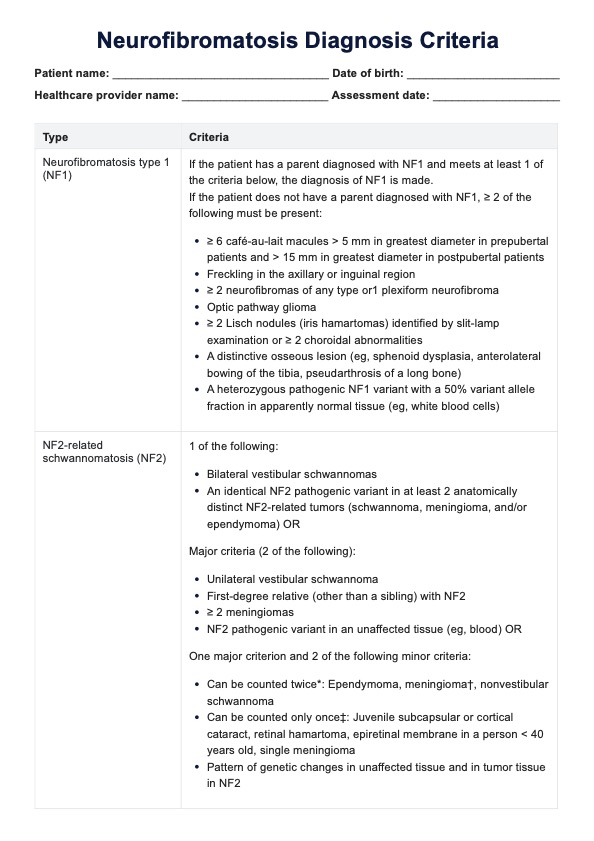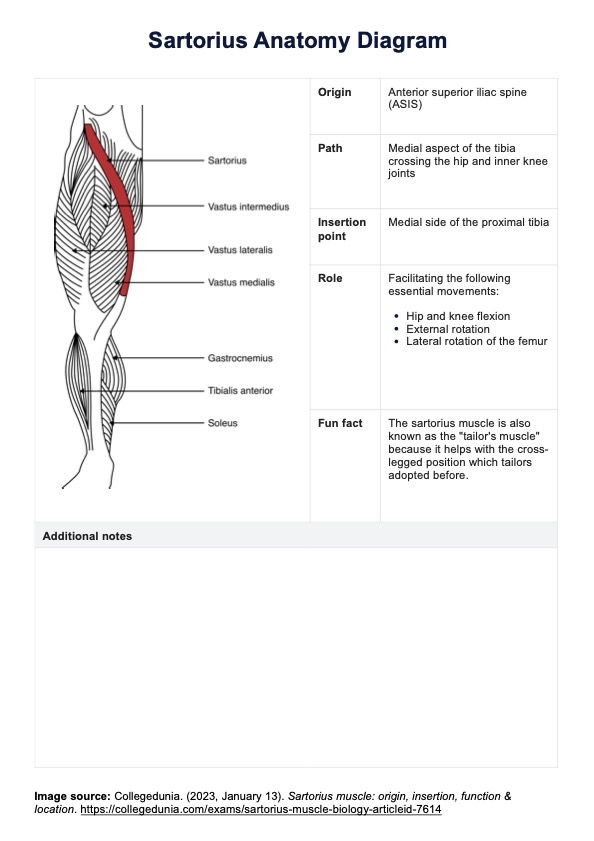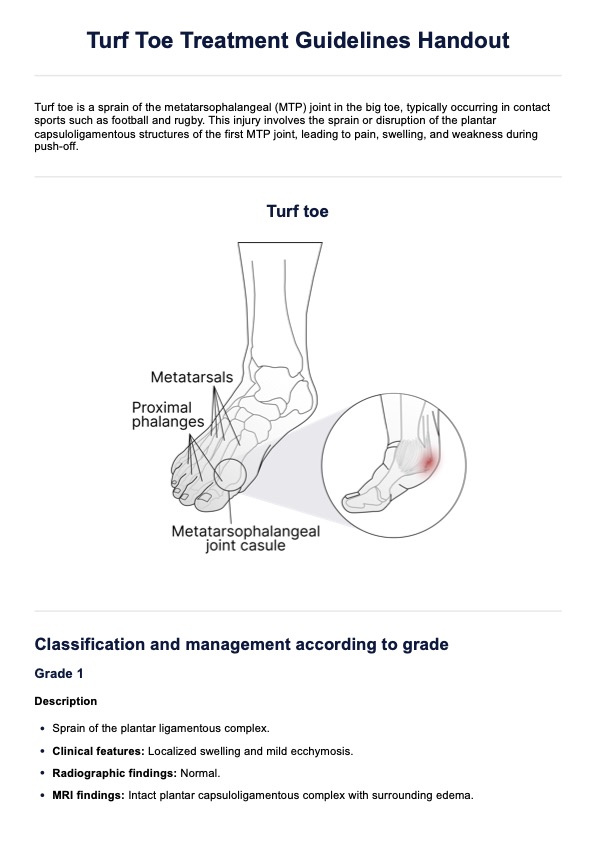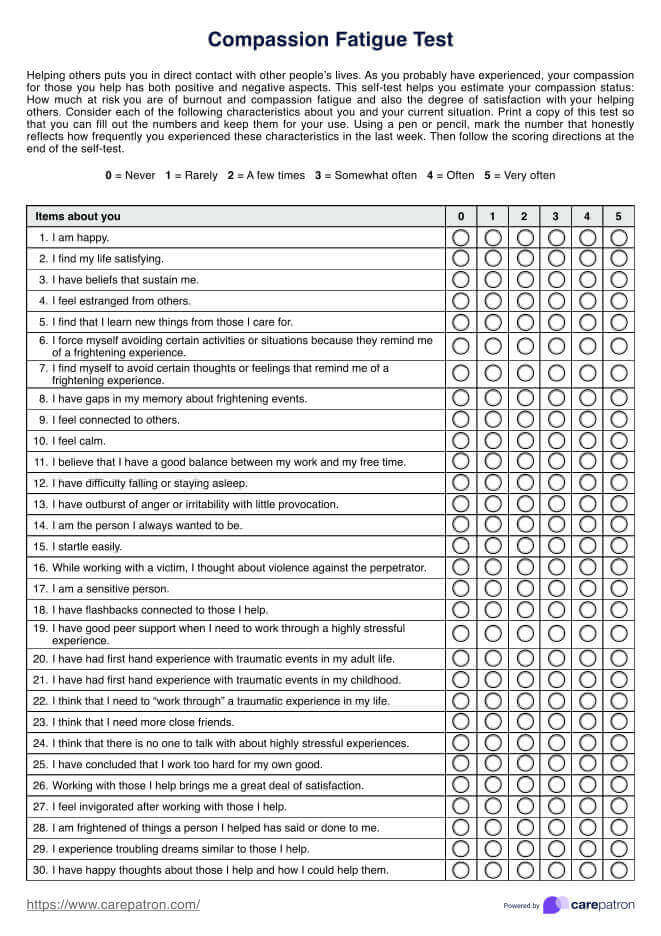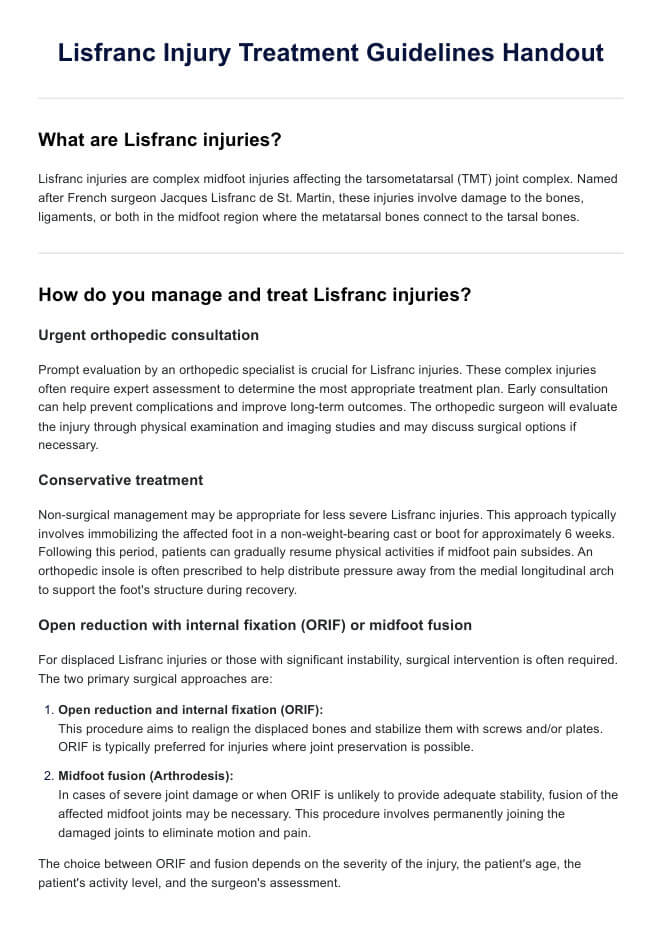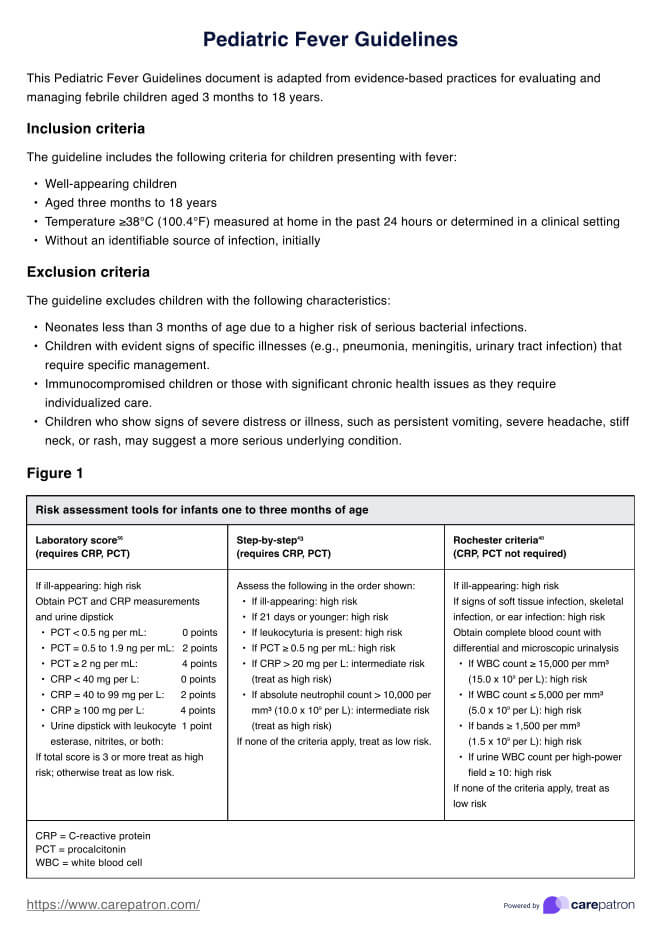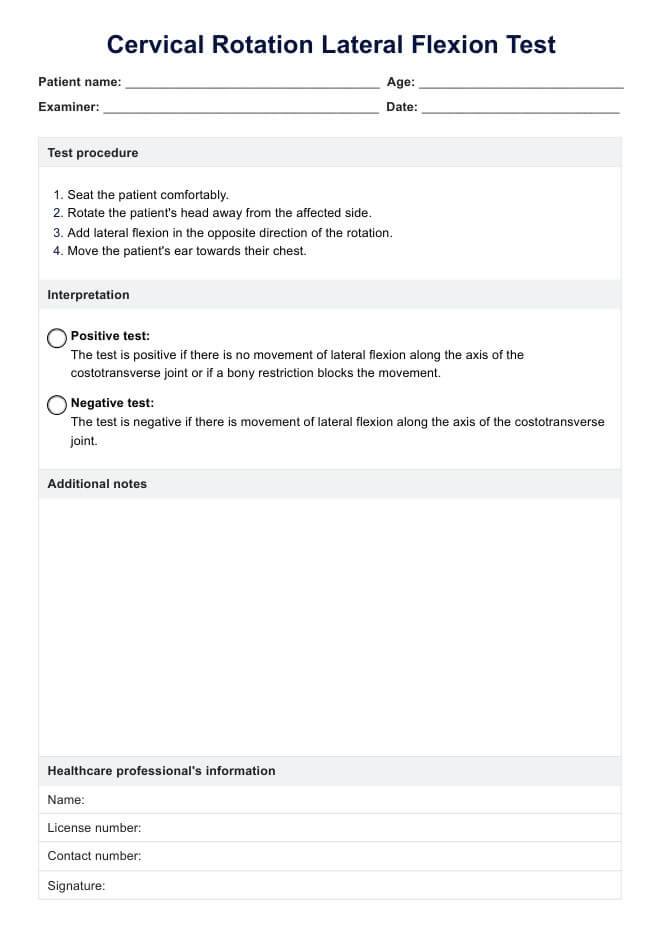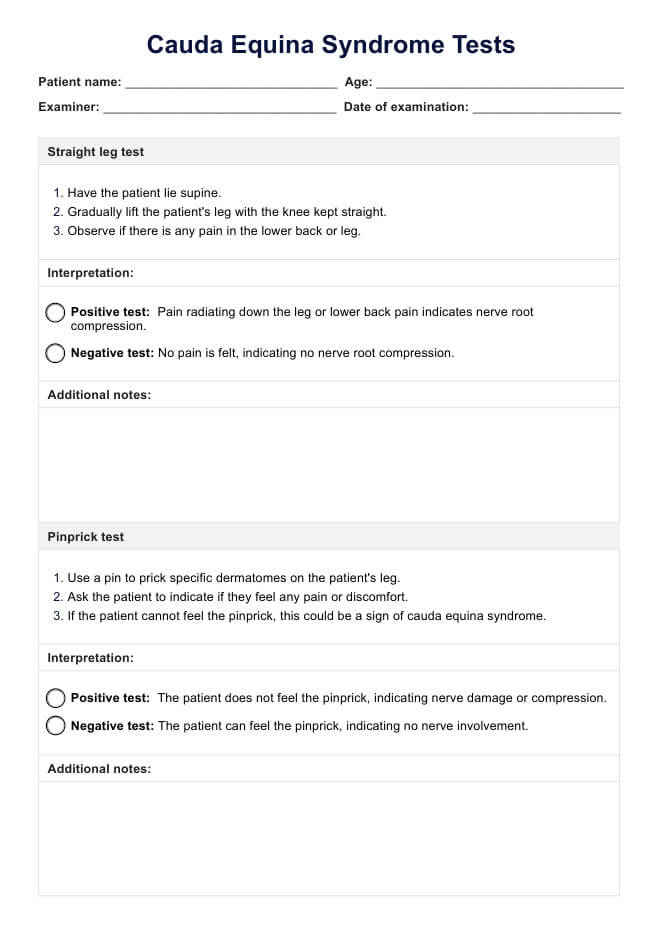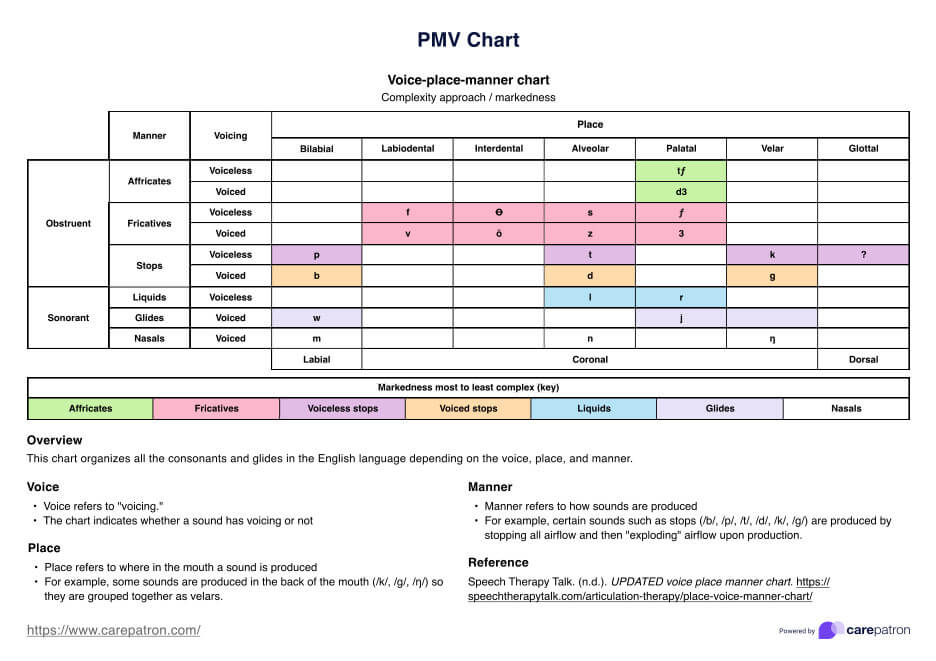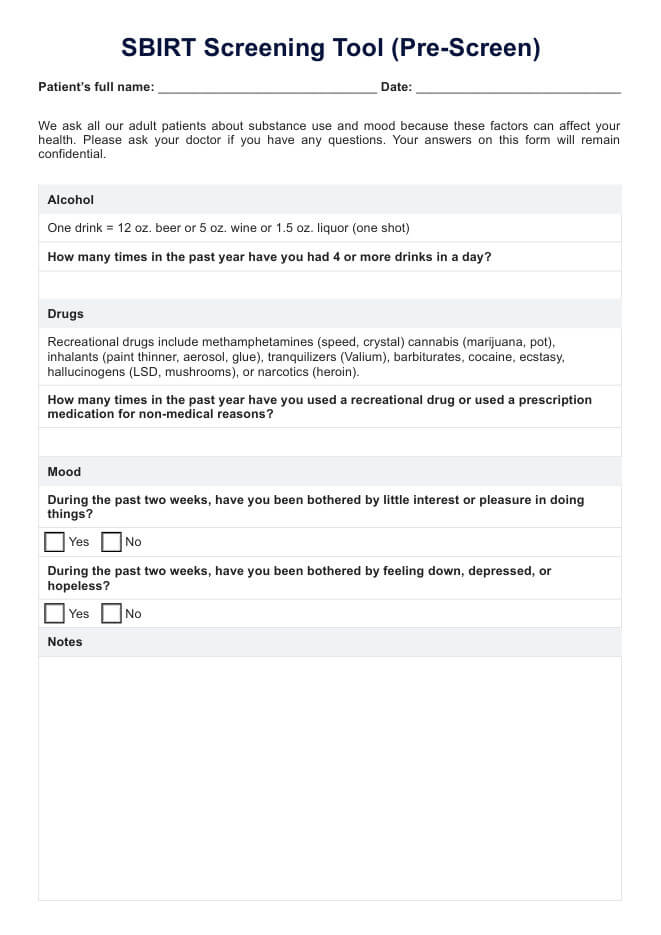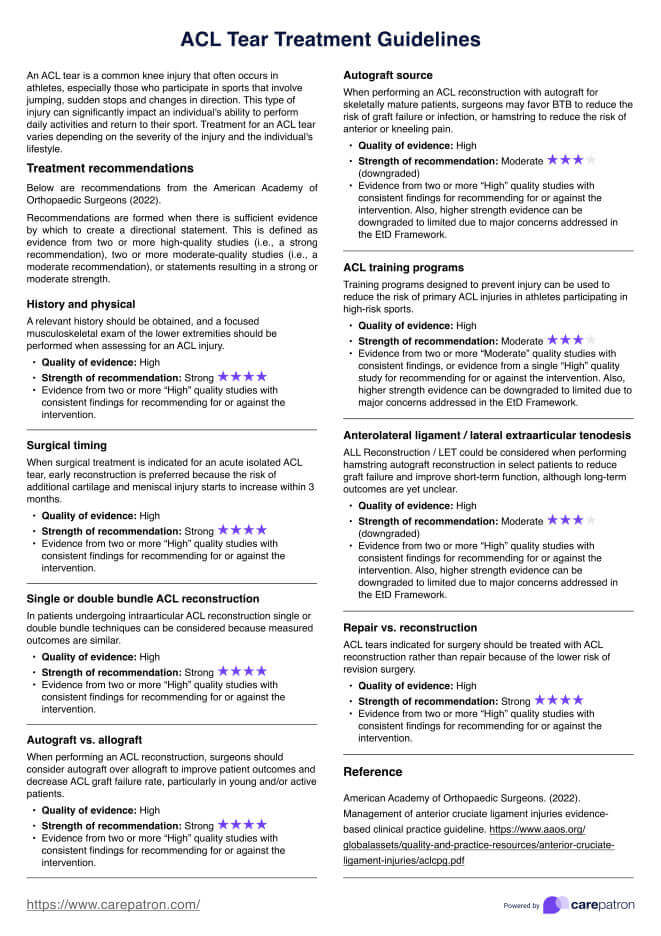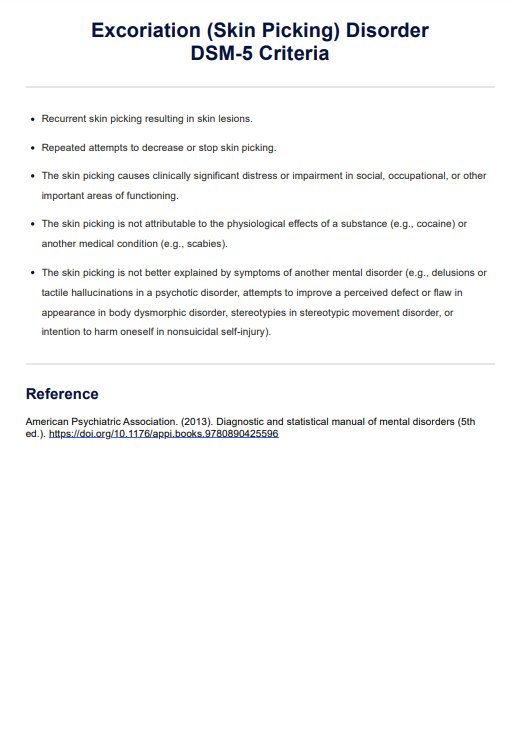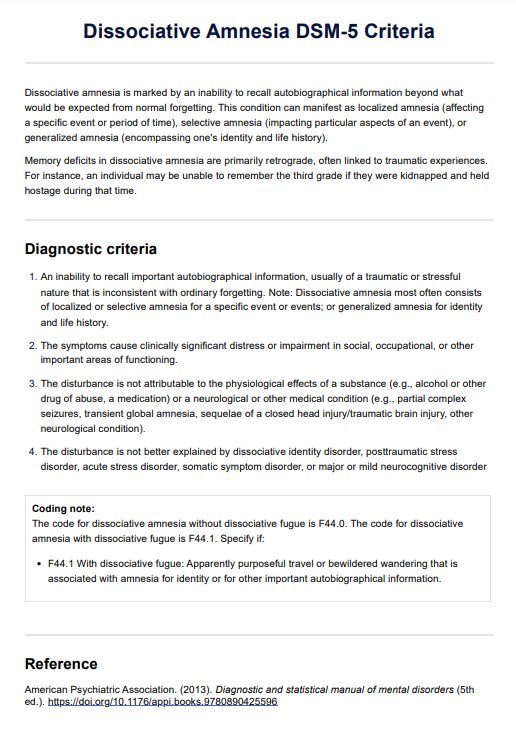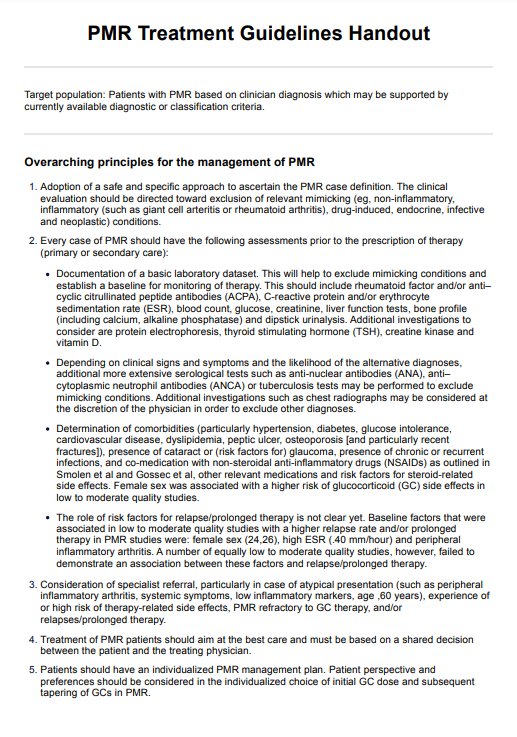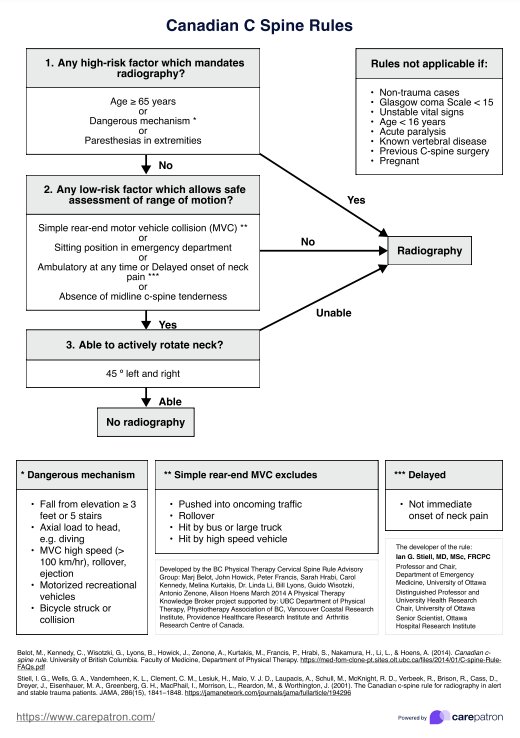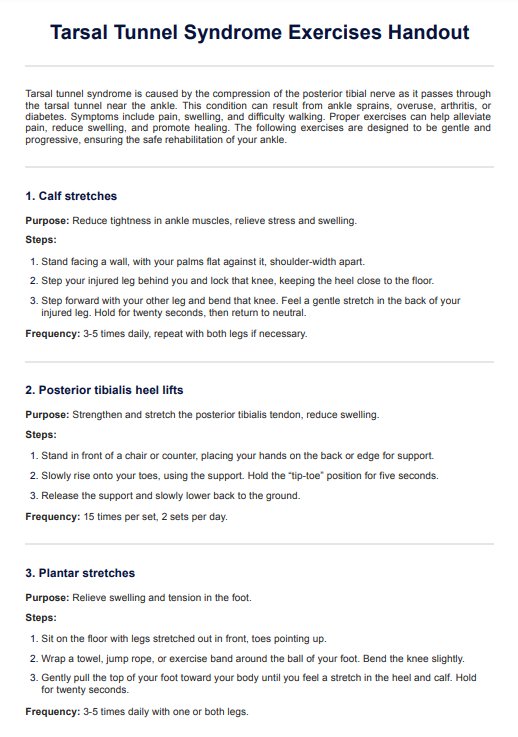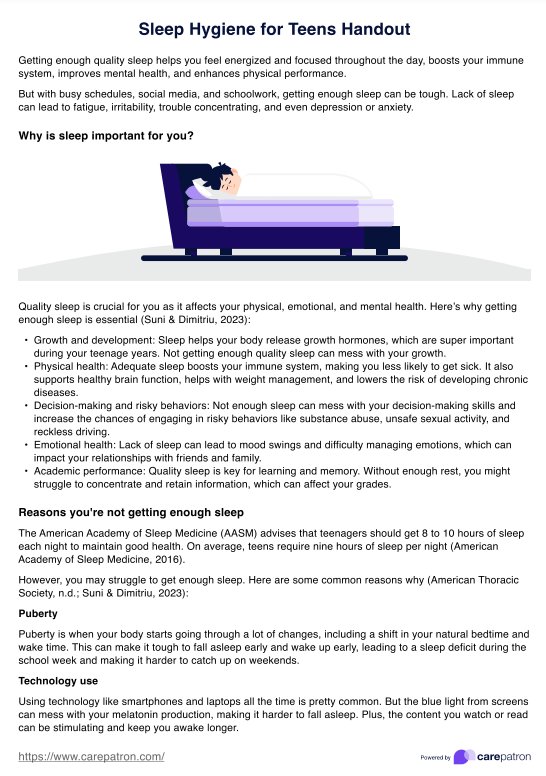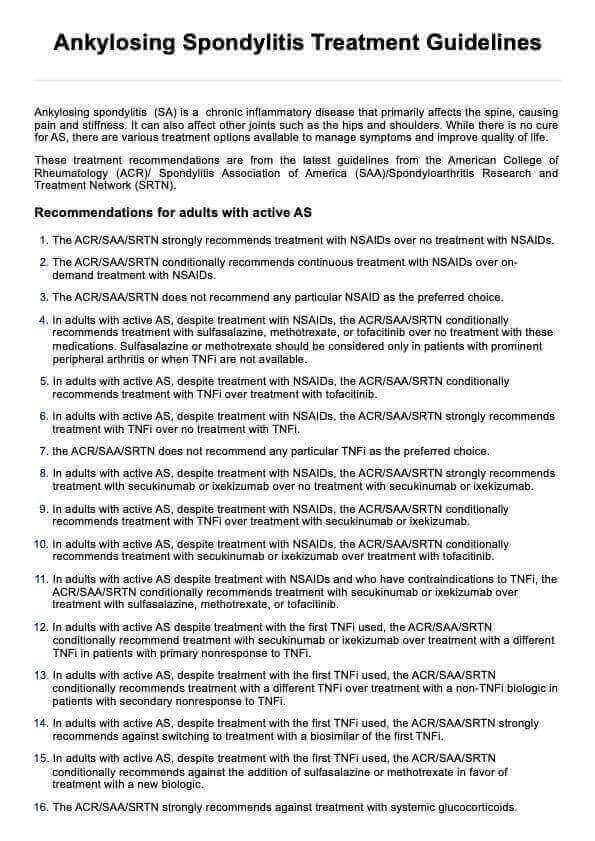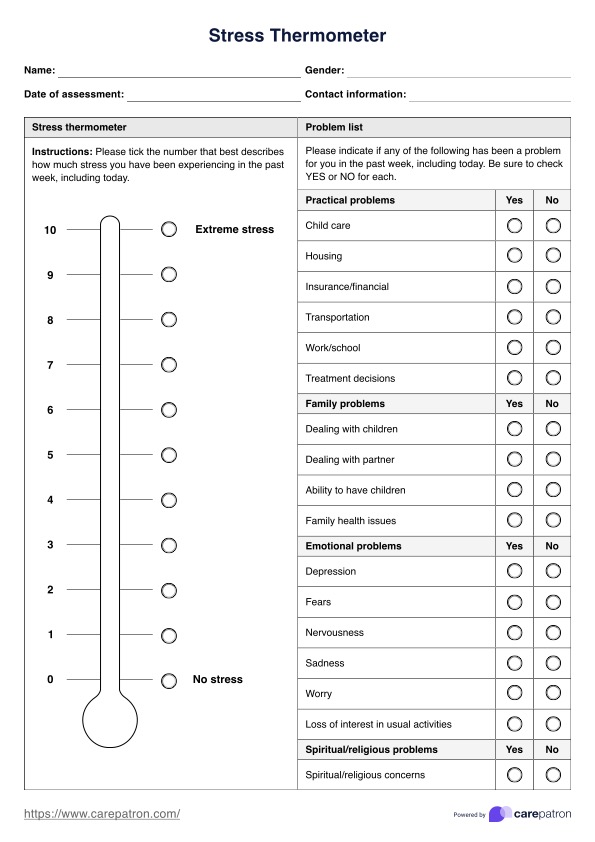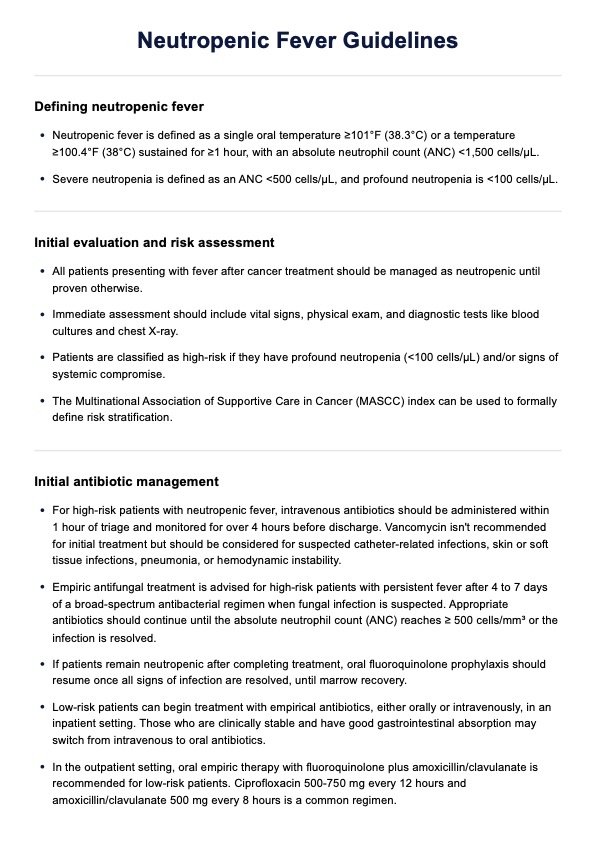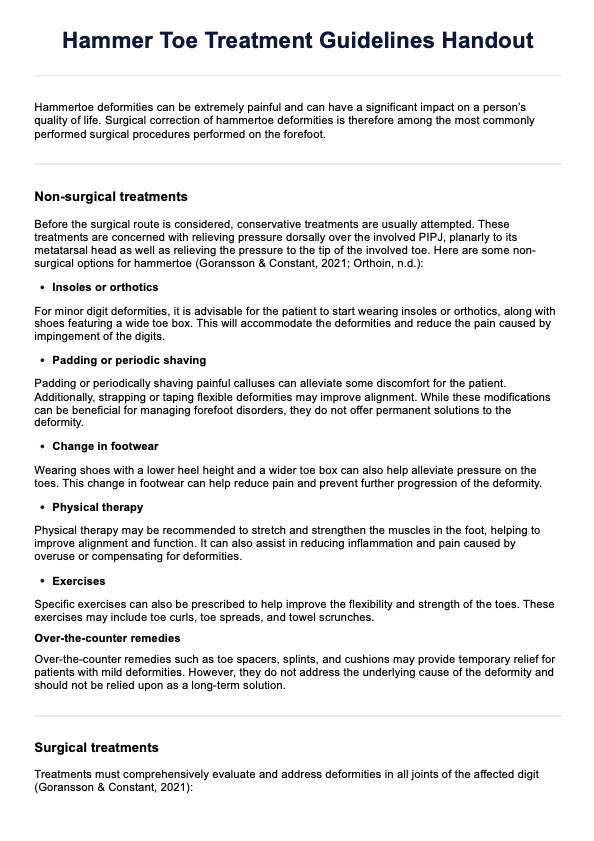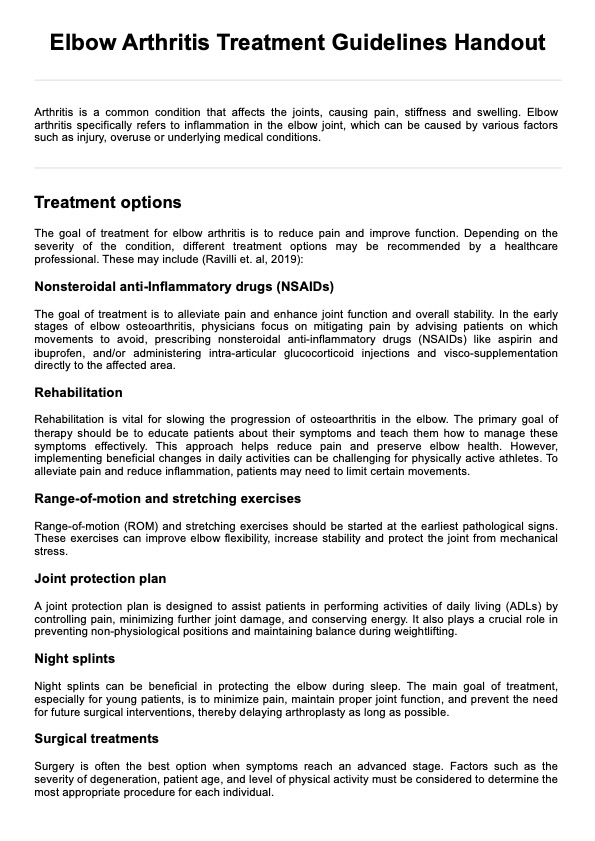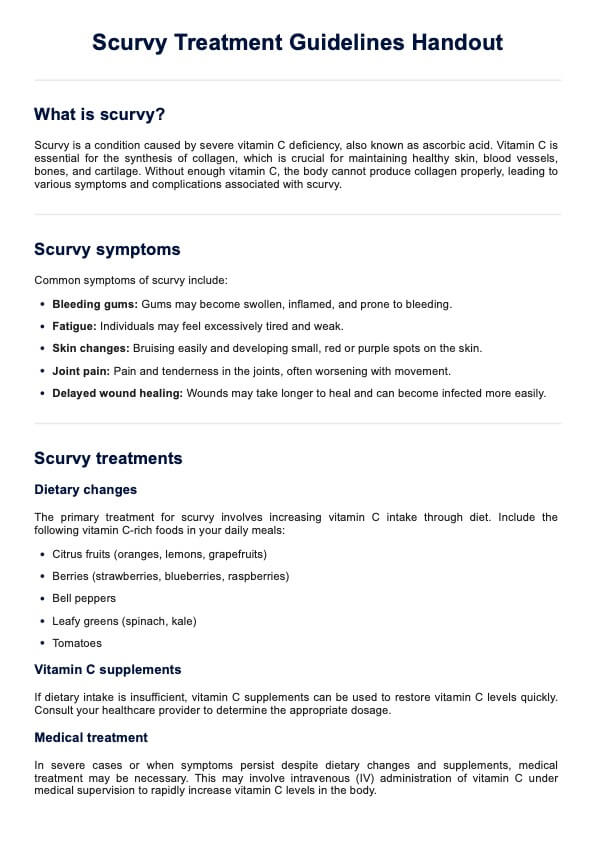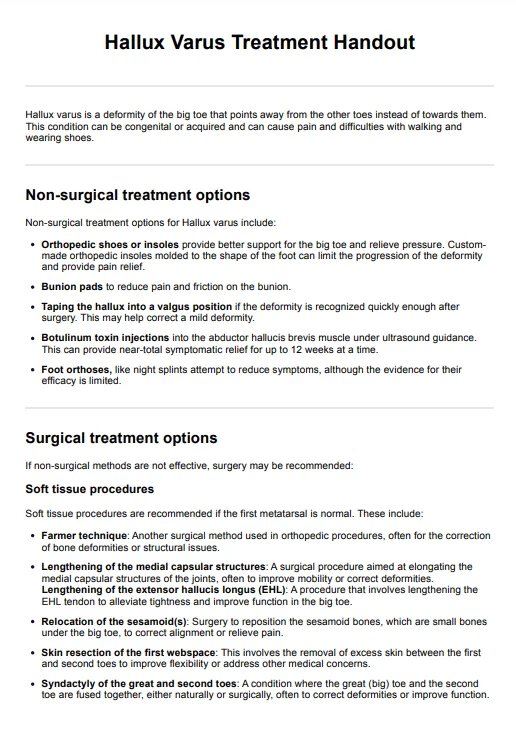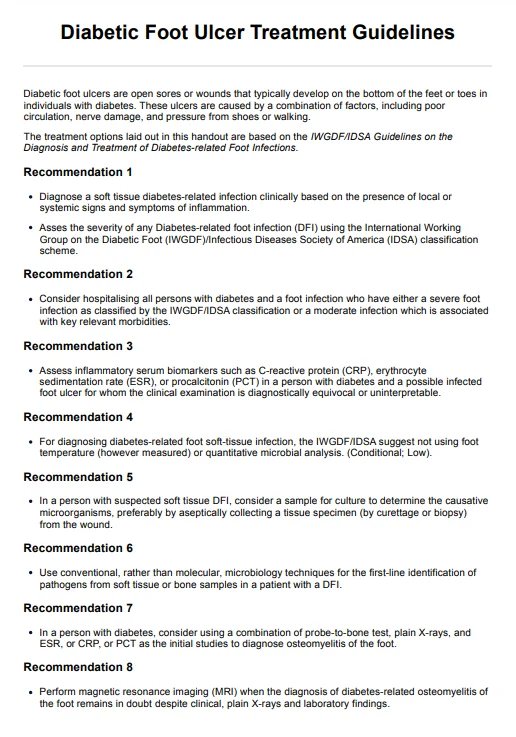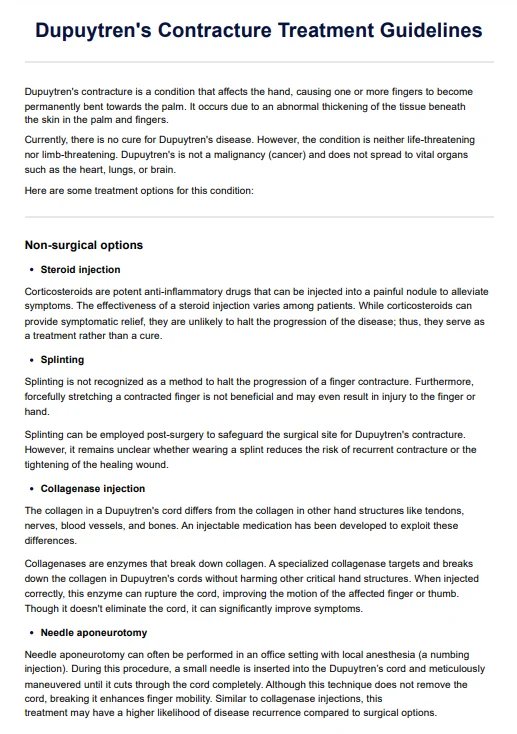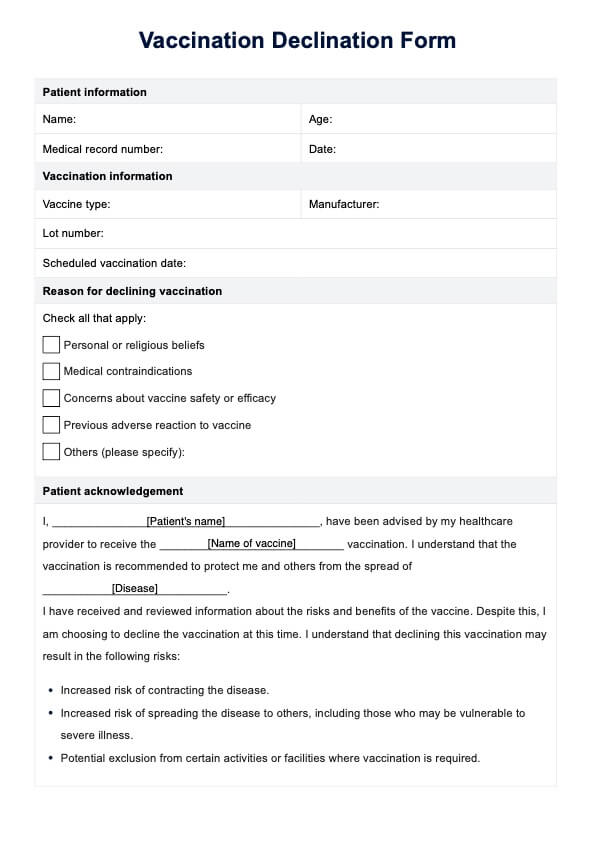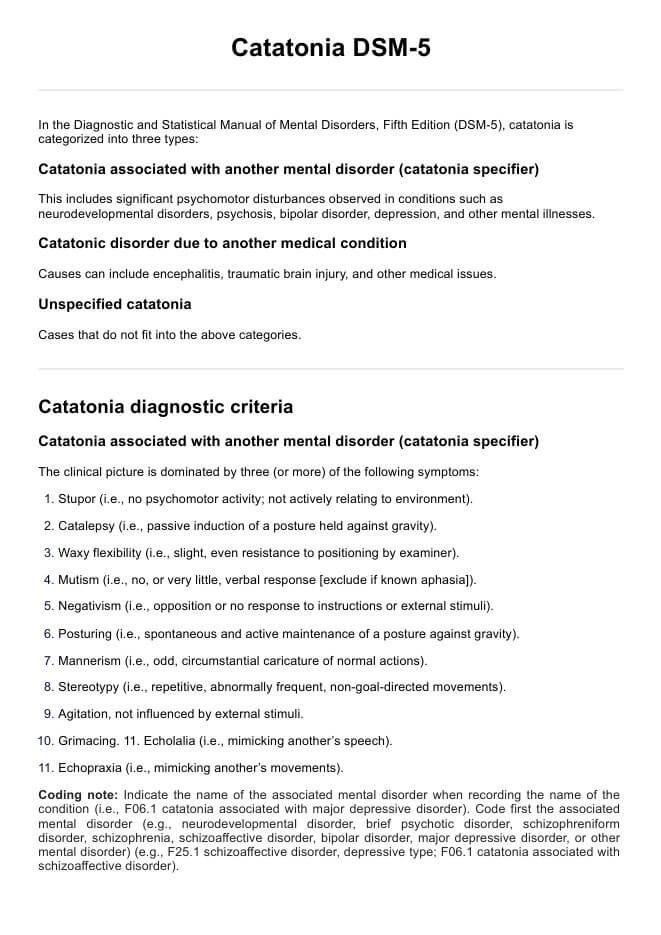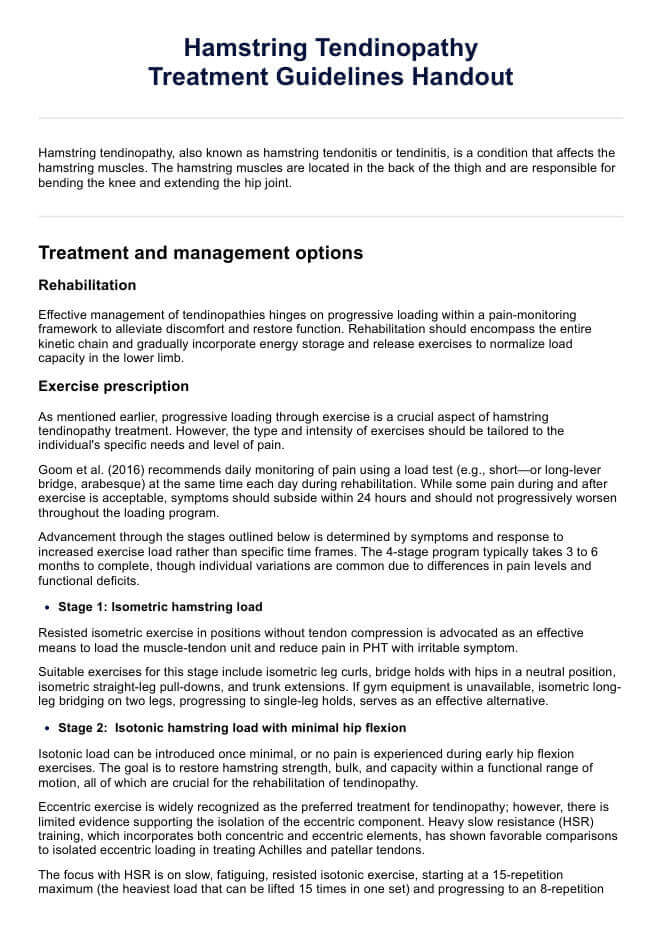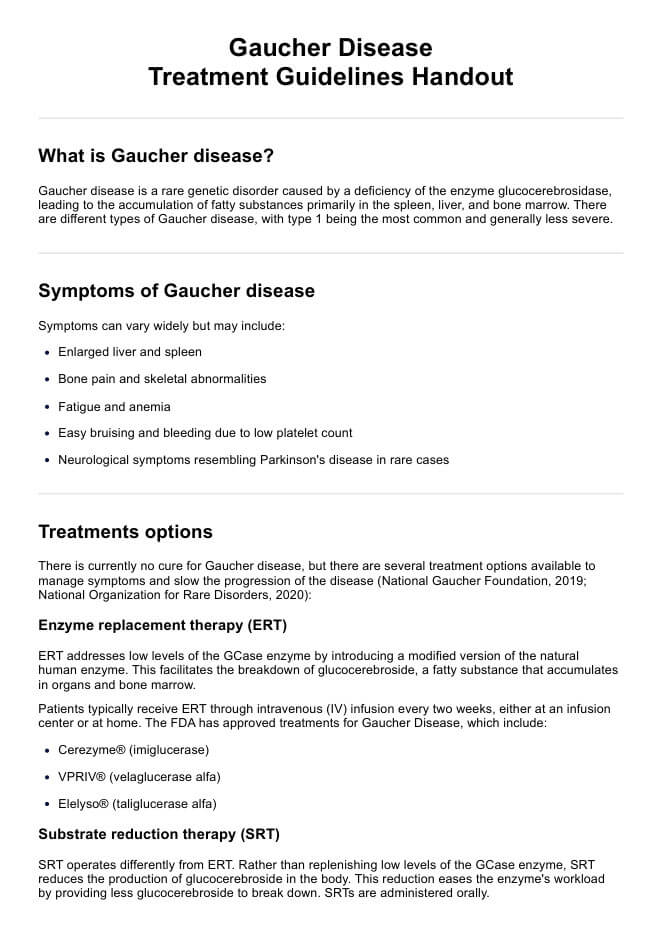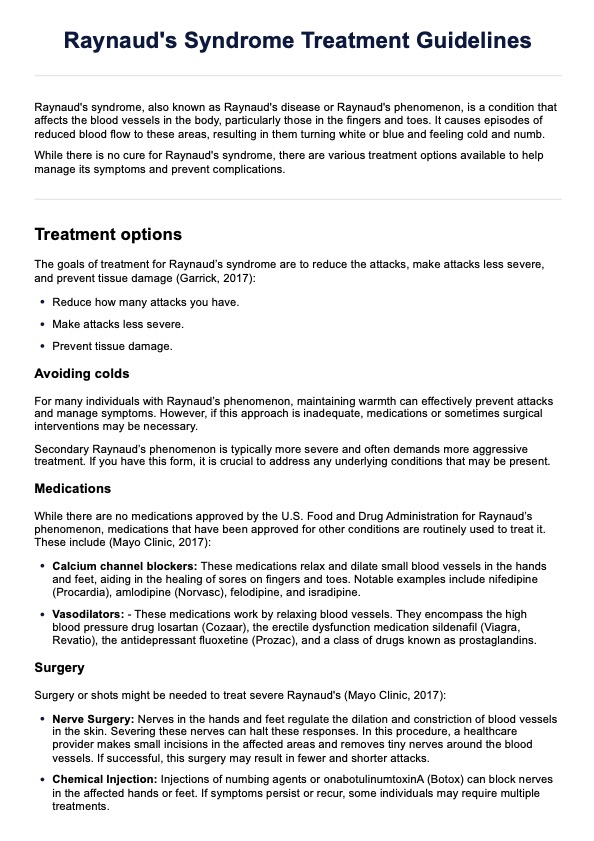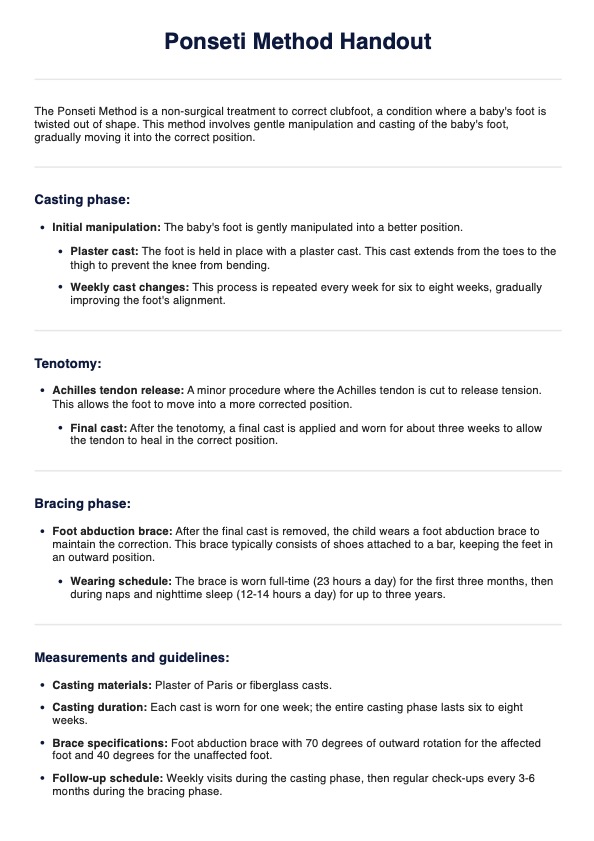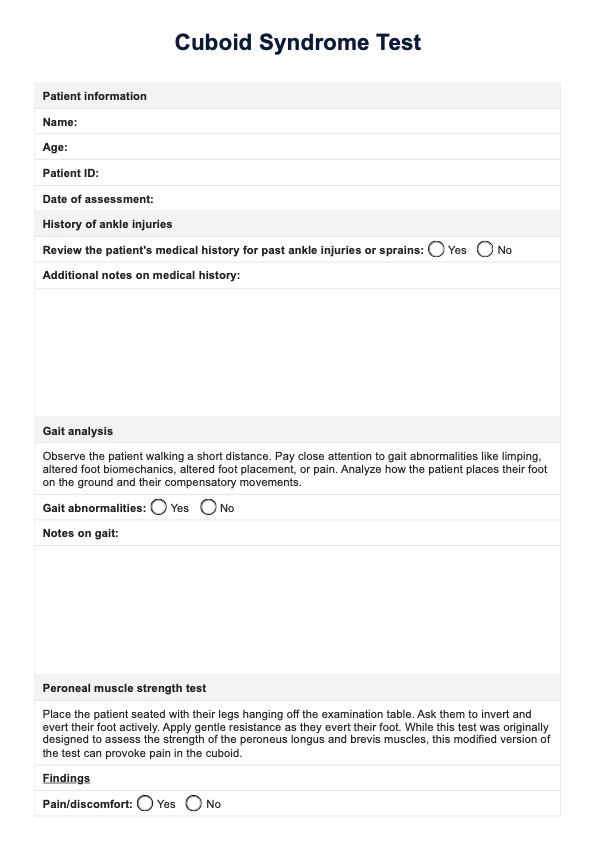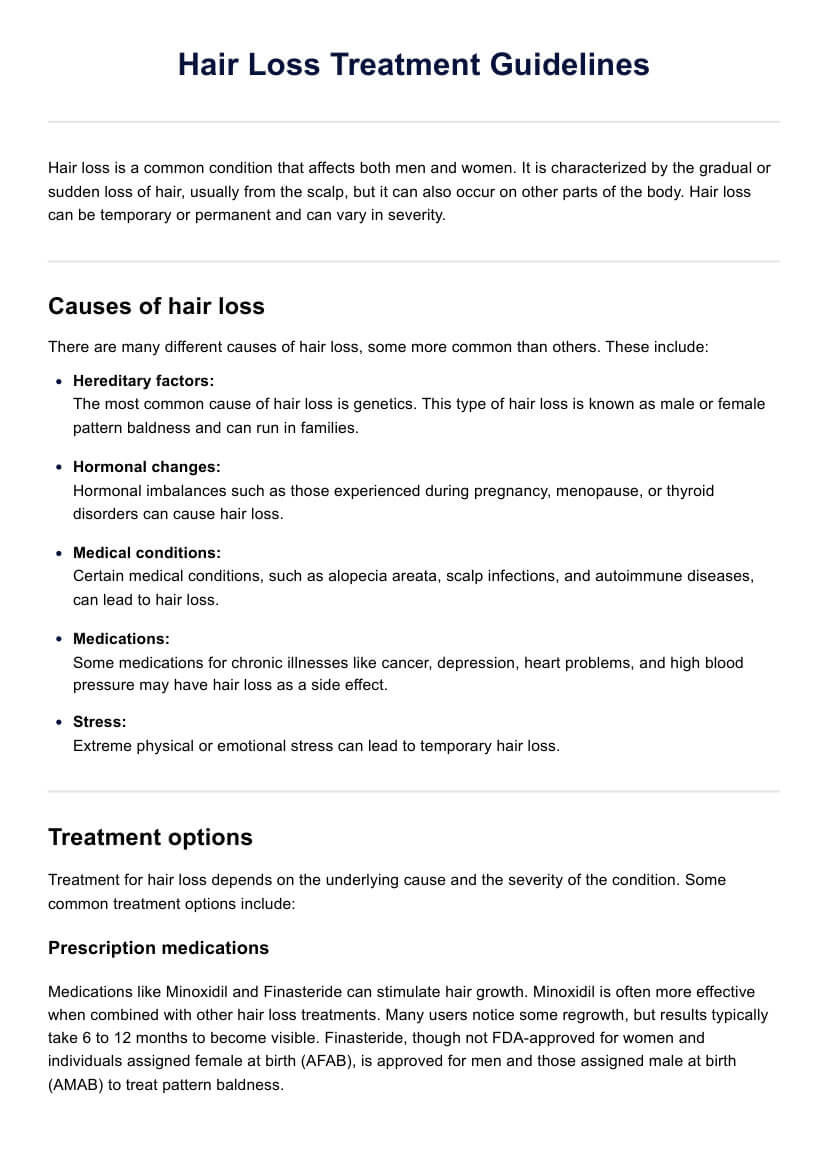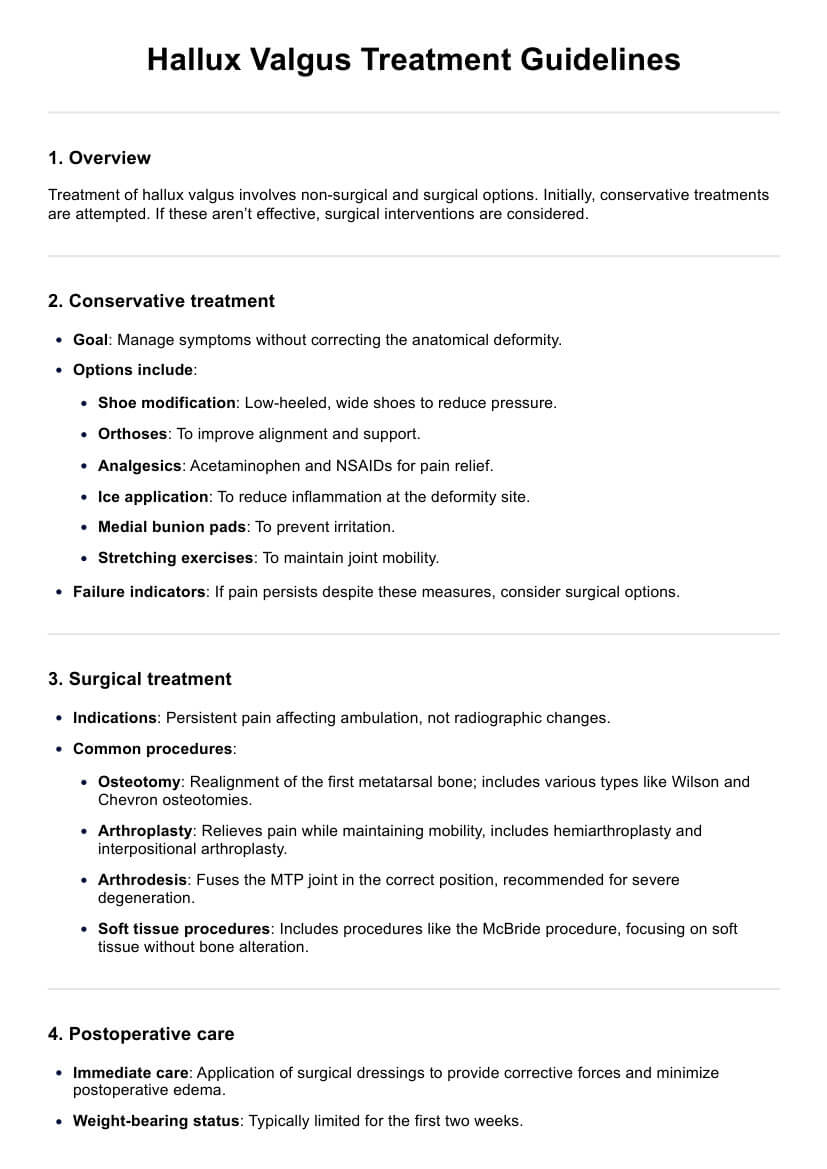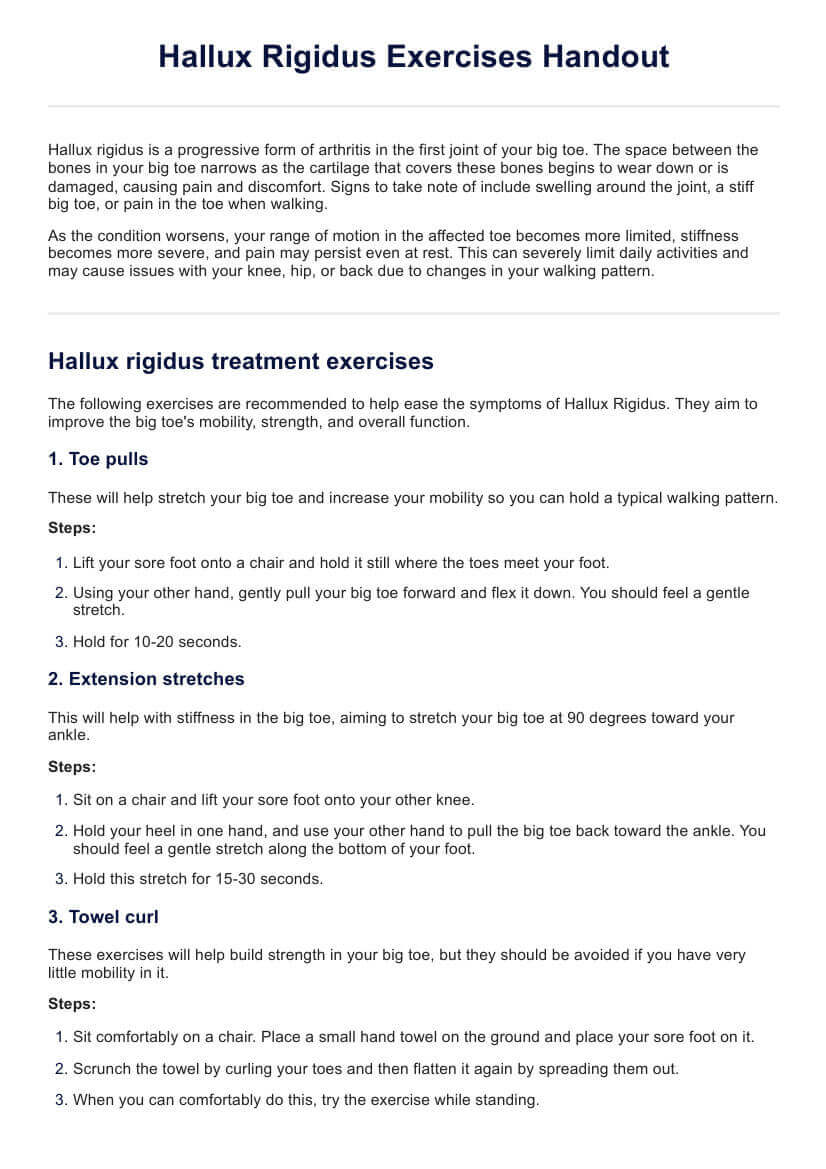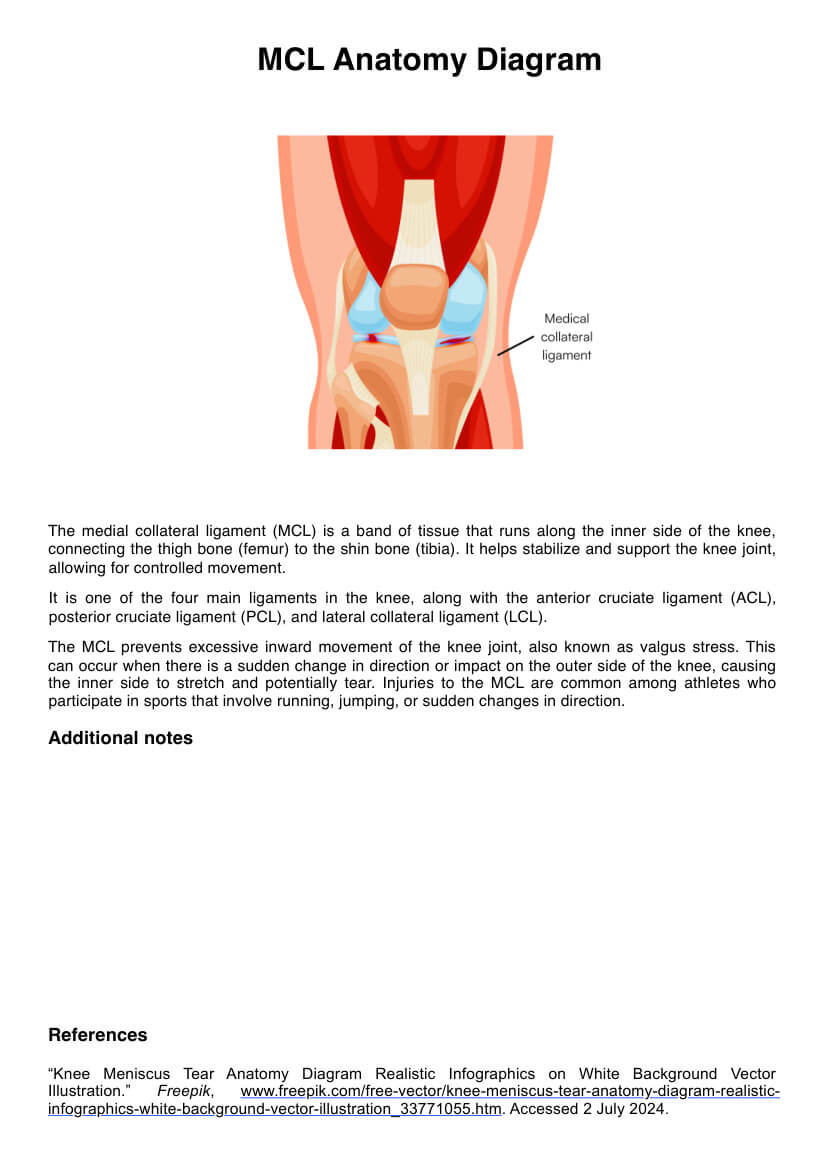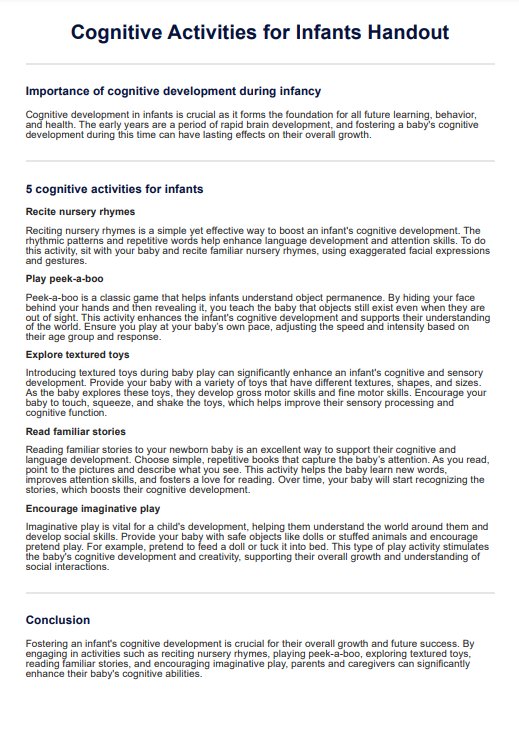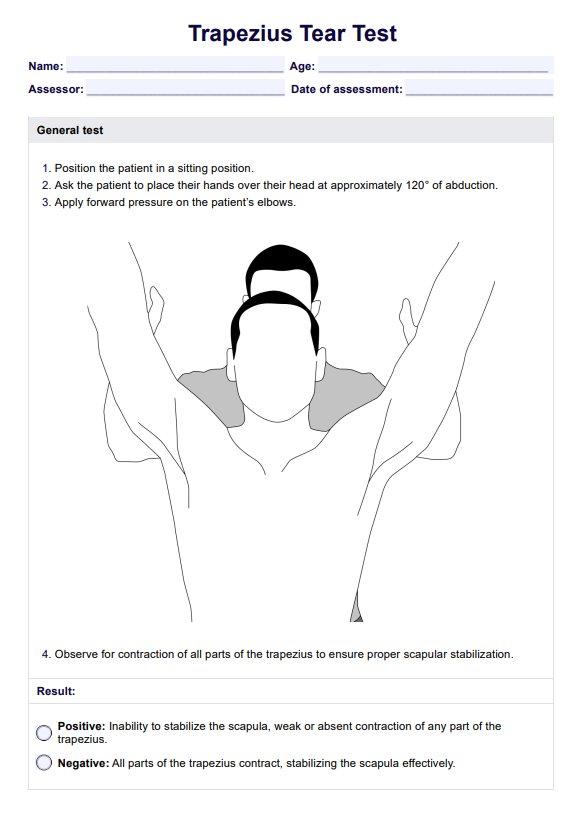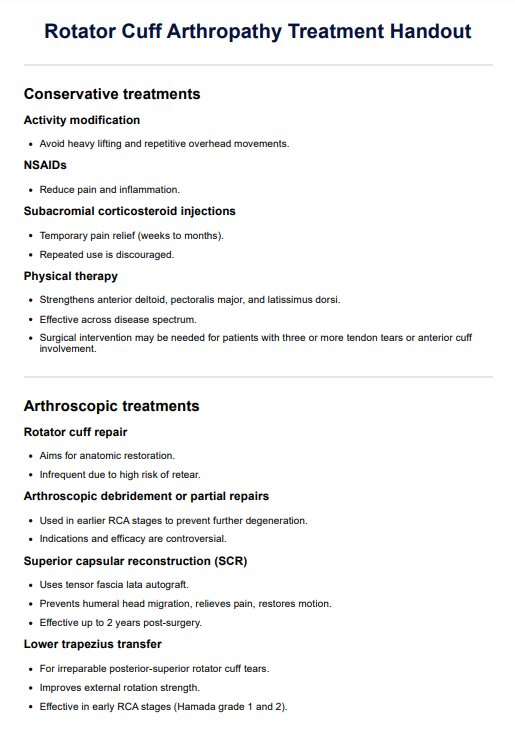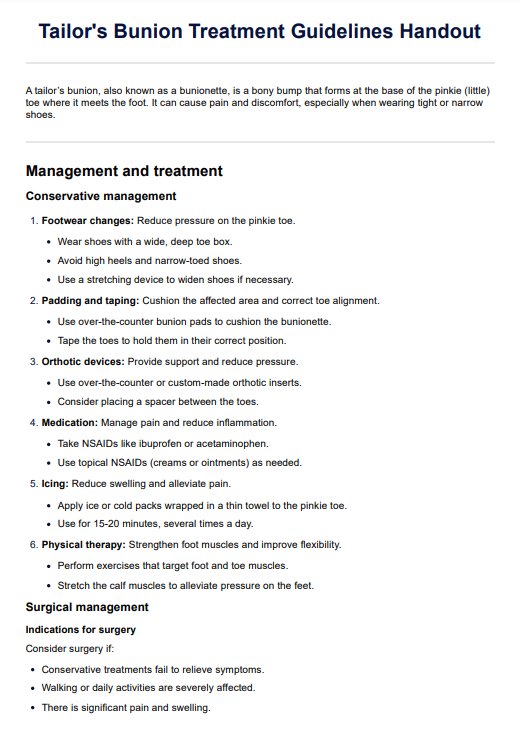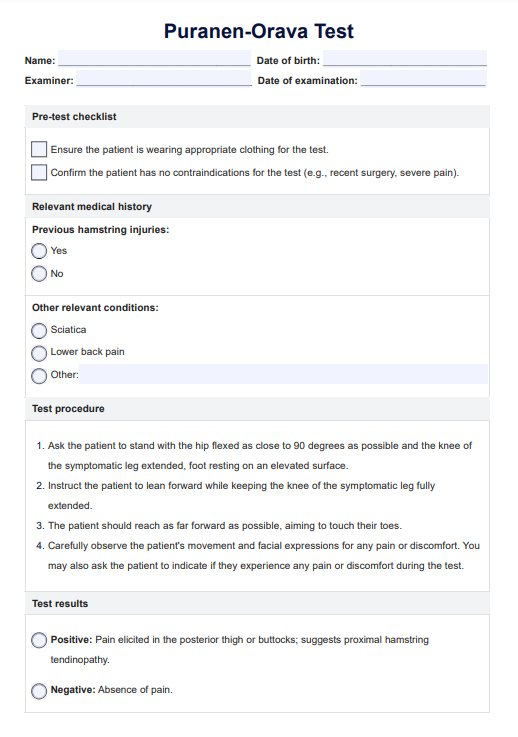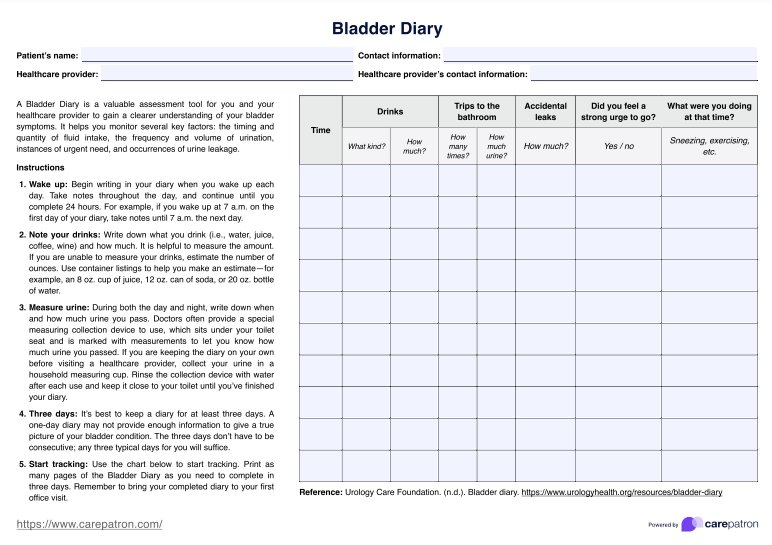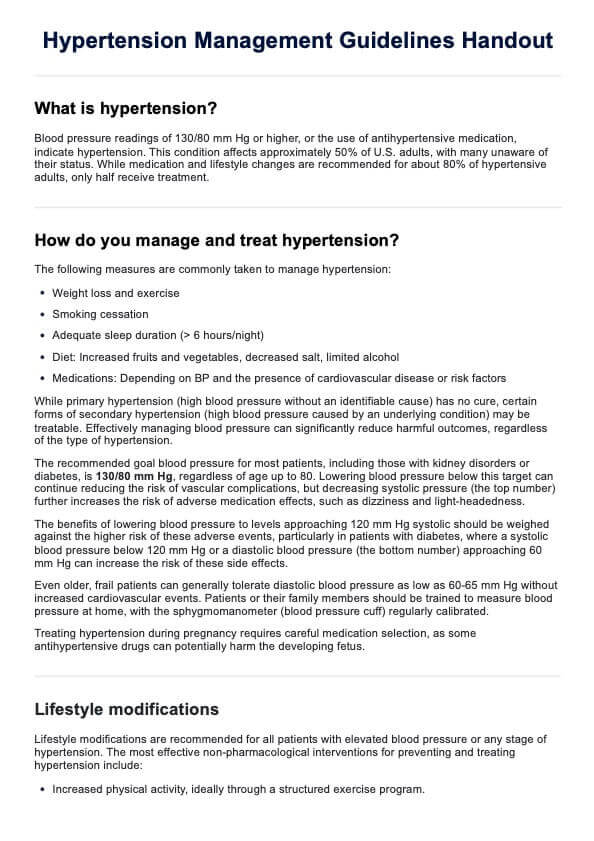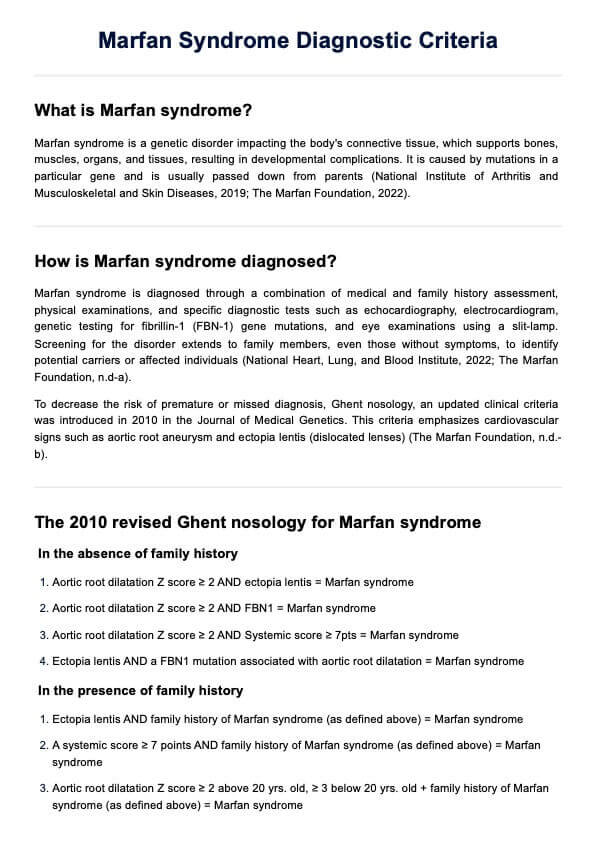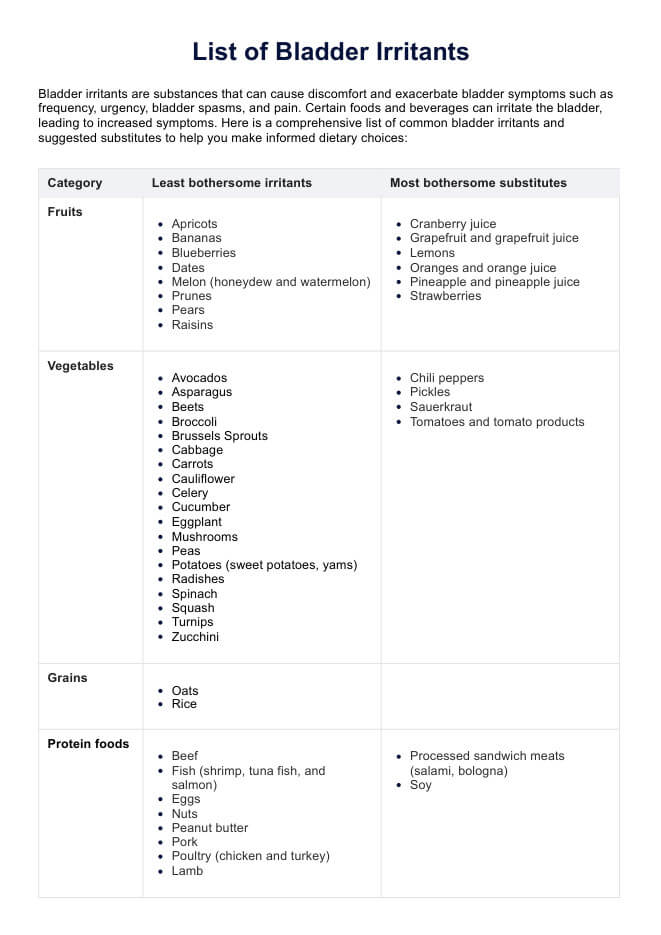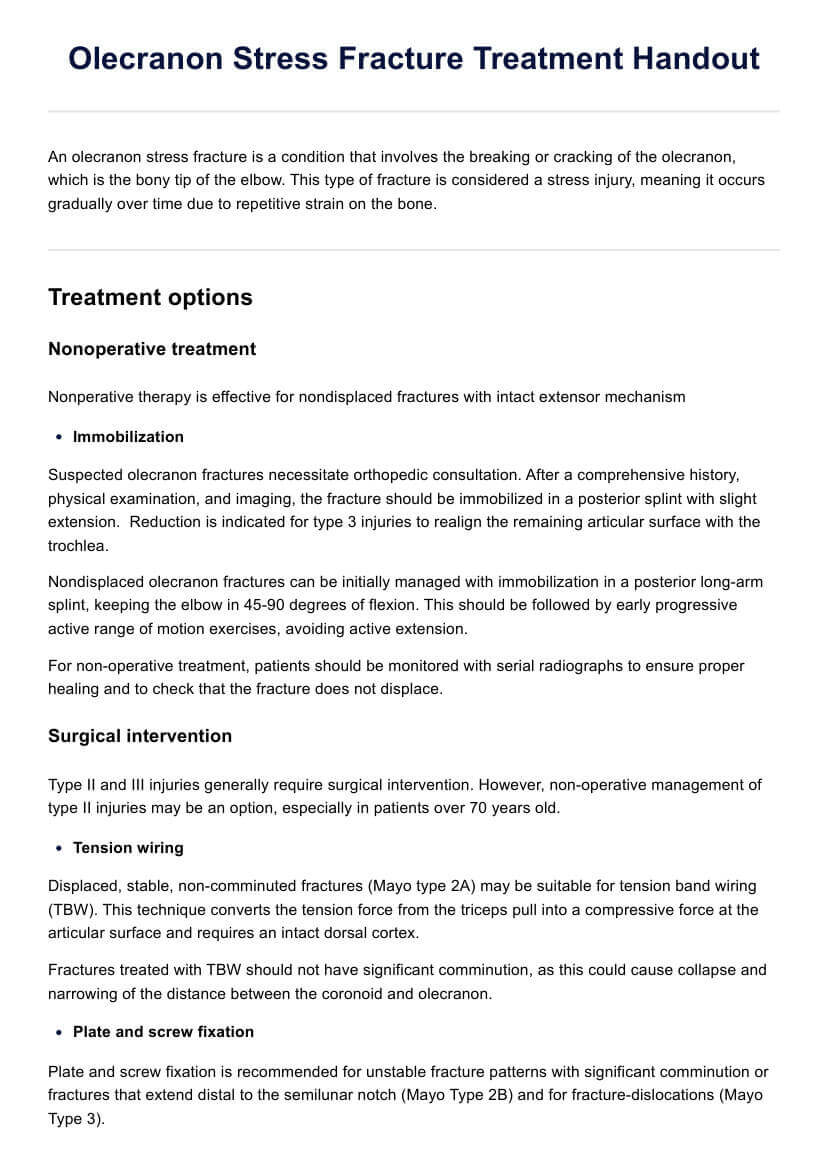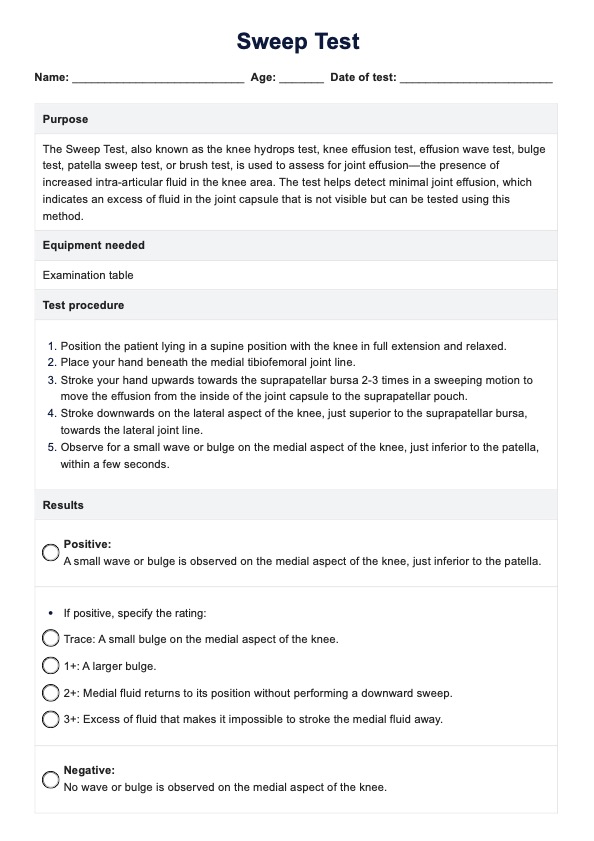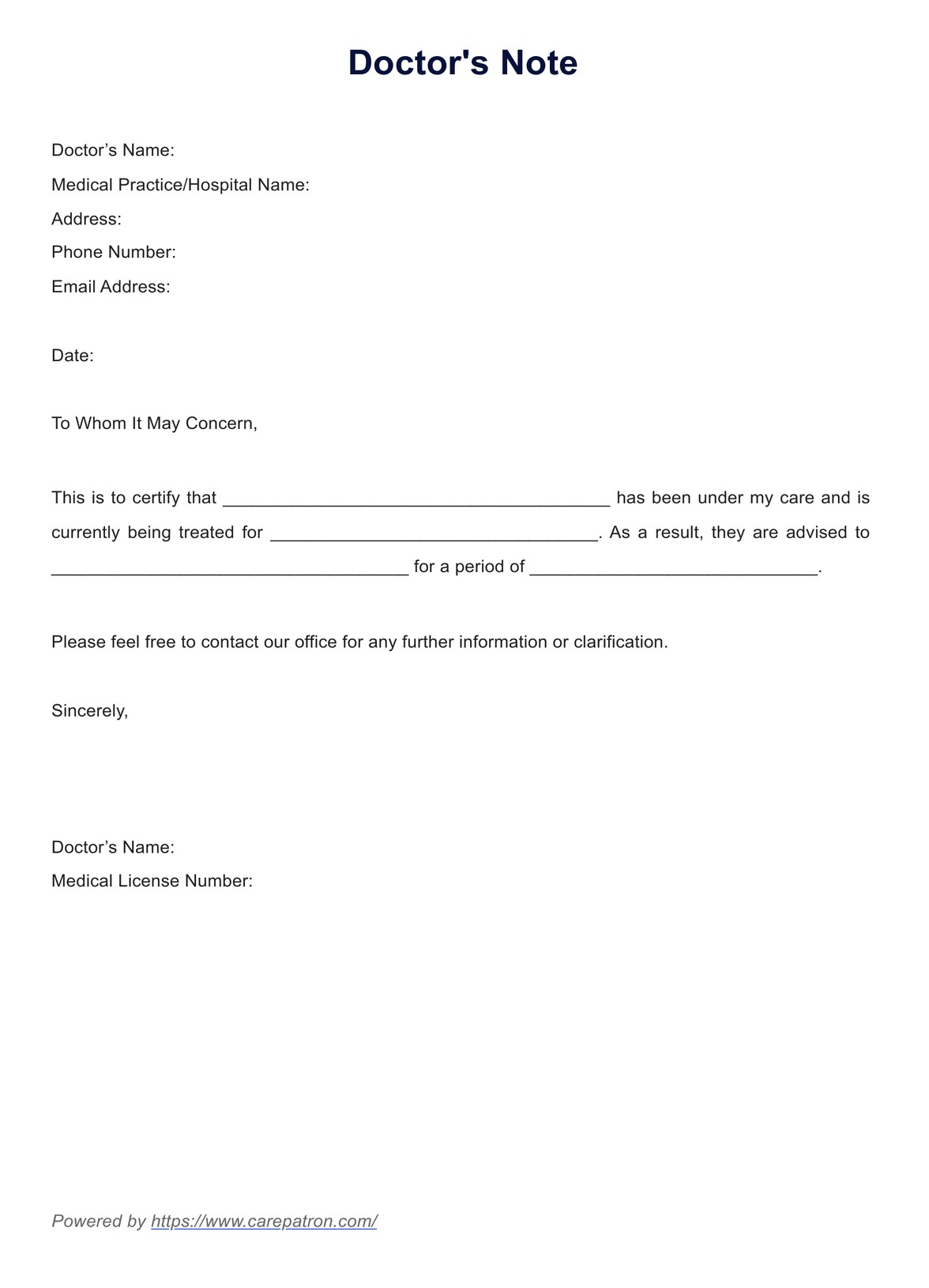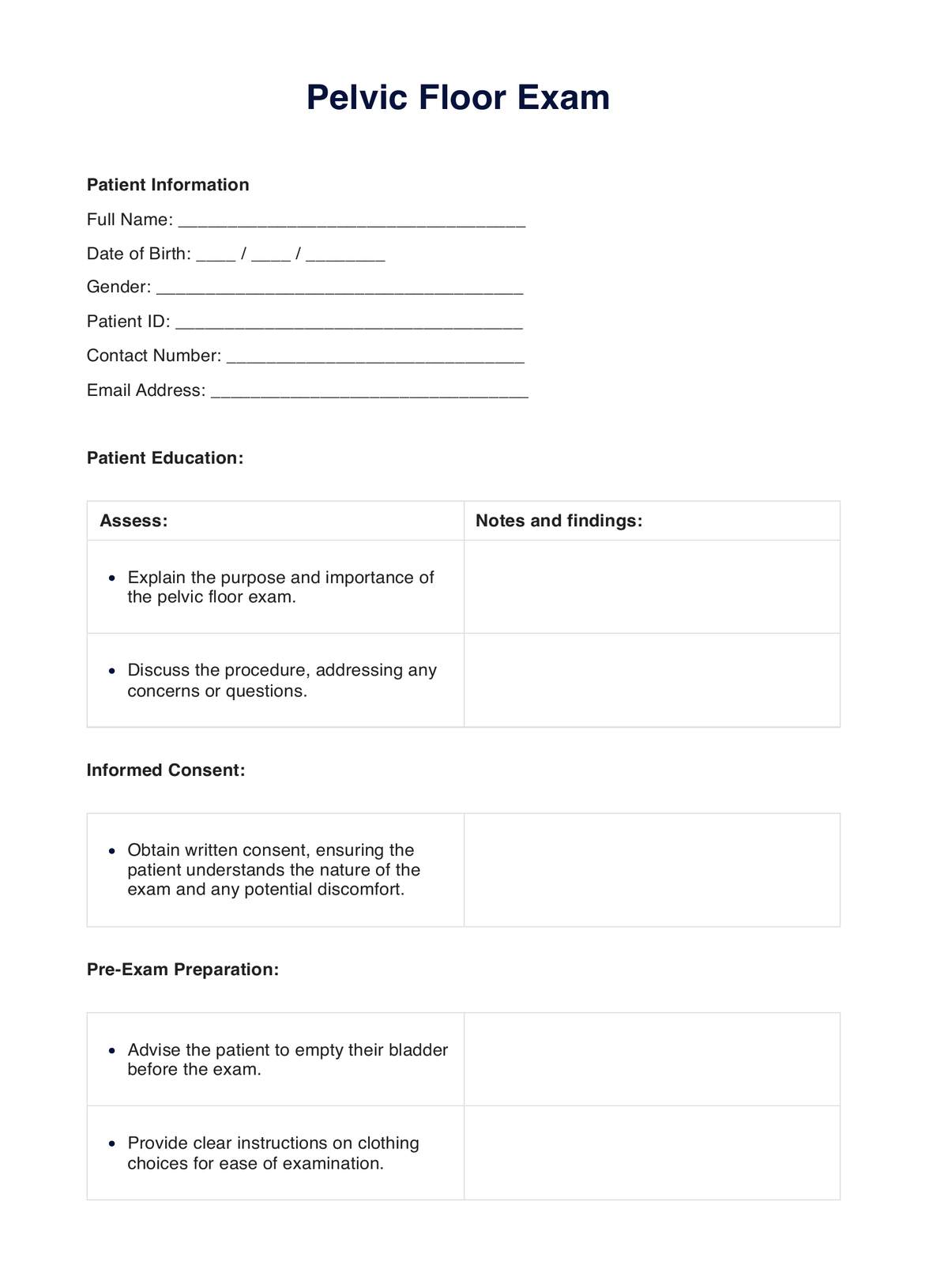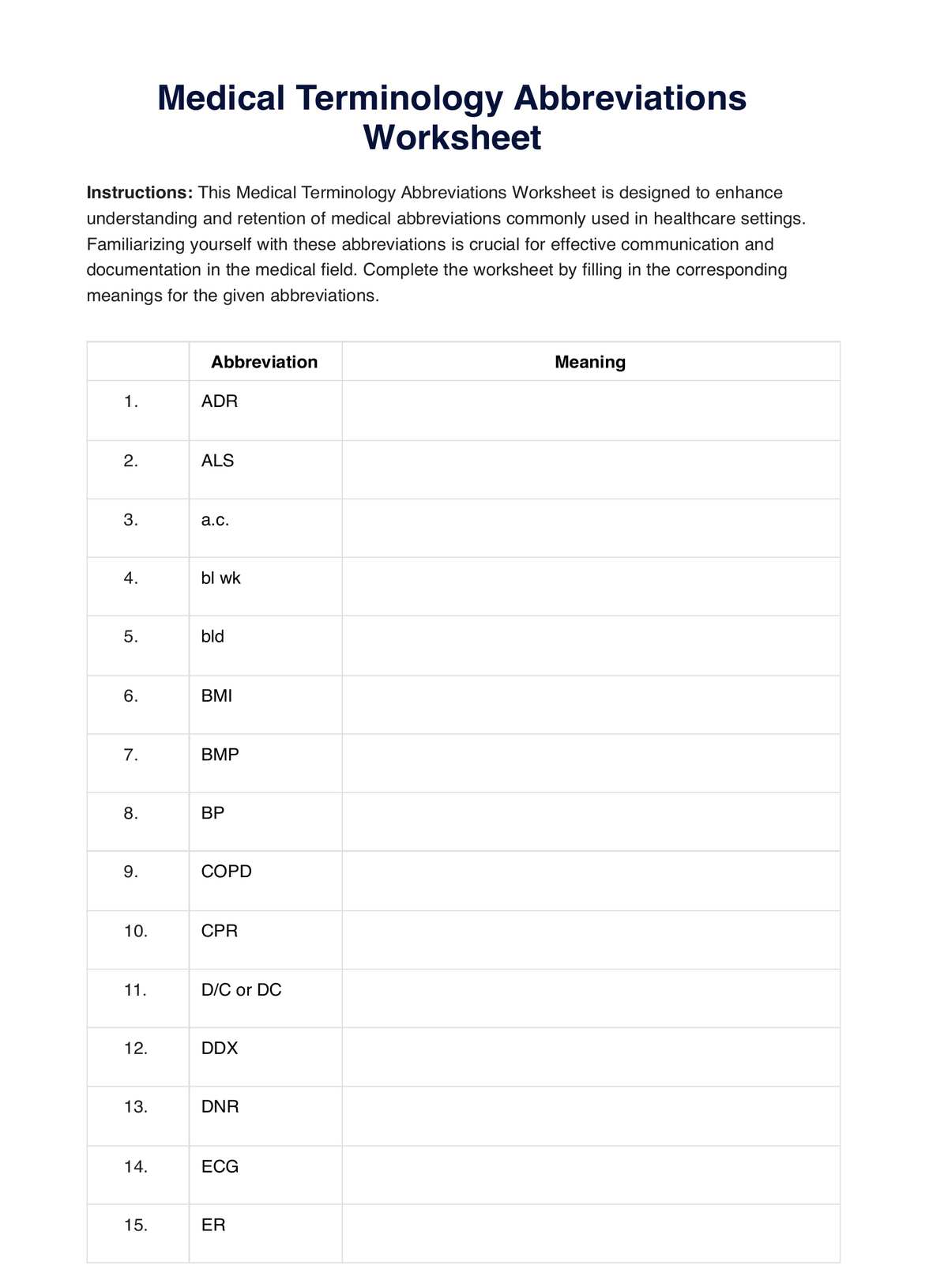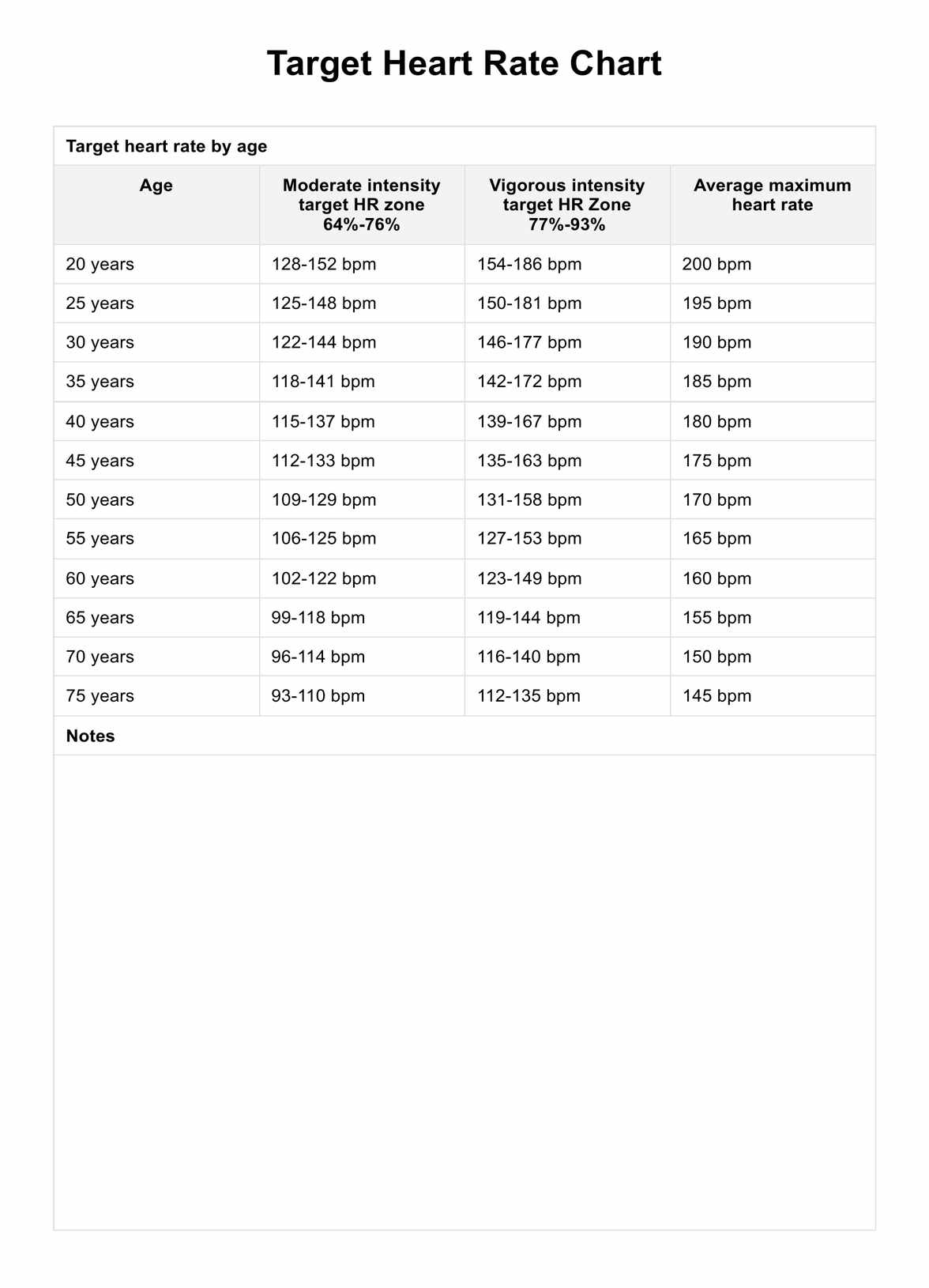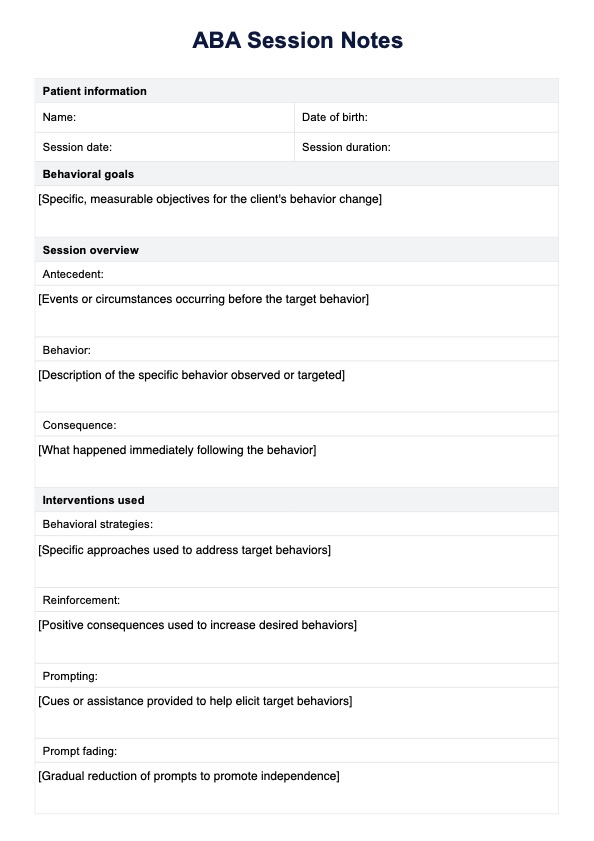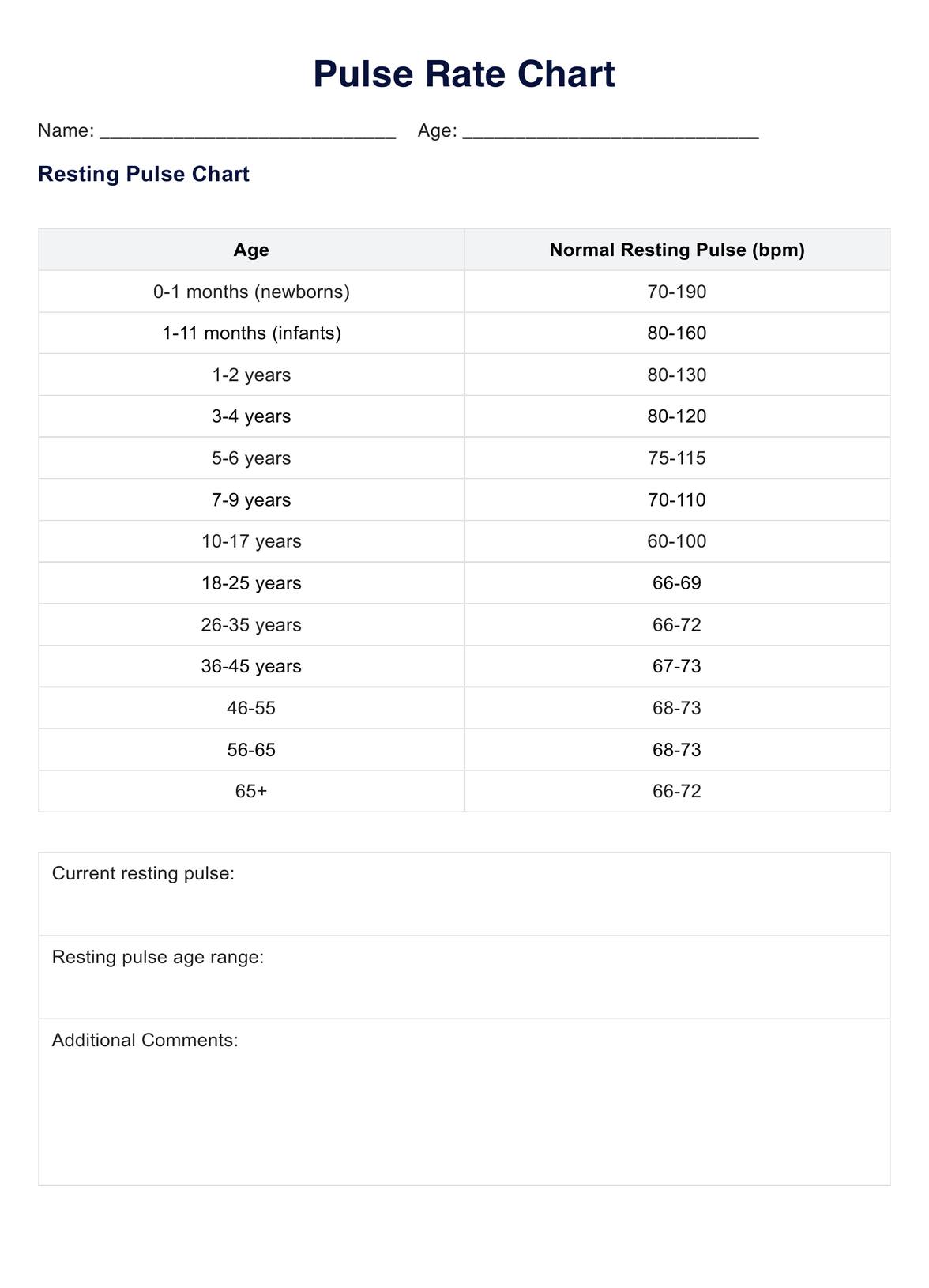Oral Allergy Syndrome Chart
Ensure your patient has an Oral Allergy Syndrome Chart template to be well-informed of food that may trigger severe allergic reactions. Download our free template now.


What is an oral allergy syndrome?
In 2021, approximately 20 million people in the U.S. had food allergies. Of these, roughly 16 million were adults (6.2%), and around 4 million were children (5.8%) (Asthma and Allergy Foundation of America, n.d.).
Paying attention to oral allergies is necessary because they can signal more significant allergic reactions throughout the body. Ignoring these signs might lead to serious health issues, so acting early is essential. By spotting and managing oral allergies promptly, healthcare professionals can help keep patients safe and prevent more severe reactions.
Pollen food allergy syndrome (PFAS), also called oral allergy syndrome (OAS), is a classification of food allergy. It is a contact allergic reaction that manifests when the mouth and throat come into contact with raw fruits or vegetables. This reaction stems from the striking similarity between the proteins found in certain fruits and vegetables and those present in pollen, confusing the immune system and triggering an allergic response, a phenomenon known as cross-reactivity.
Allergic symptoms of pollen food syndrome are distinctive, primarily involving itchiness or swelling of the mouth, face, lip, and tongue, and significant throat discomfort. Notably, these symptoms tend to surface promptly after consuming raw fruits or vegetables, though there are rare instances where reactions may occur more than an hour later.
Oral Allergy Syndrome Chart Template
Oral Allergy Syndrome Chart Example
What is an Oral Allergy Syndrome Chart?
An Oral Allergy Syndrome Chart becomes an integral resource to assist individuals in managing and understanding potential triggers. This chart comprehensively outlines the conceivable cross-reactivities between pollen and various plant foods.
For example, the chart may indicate potential reactions to pitted fruits or carrots if one has a birch pollen allergy. Even seemingly unrelated items like peanuts, almonds, and hazelnuts may contribute to oral discomfort, illustrating the intricate cross-reactivities associated with OAS.
How does this chart work?
A printable Oral Allergy Syndrome Chart can significantly aid a patient in managing a severe allergic reaction. Follow these step-by-step instructions to make the most of this valuable resource:
Step 1: Download the template
Click the download link. The template may be in printable PDF or editable digital format, ensuring compatibility with various devices and software.
Step 2: Personalize the chart
This template has editable fields, allowing you to personalize the chart with specific allergies and sensitivities. Input essential personal details and information about your patient's known allergies, pollen triggers, and associated cross-reactivities.
Step 3: Remind your patient to display for reference
Once the chart is customized, remind your patient to place it in a convenient and visible location. Suggest they keep a copy on their phone, kitchen, or dining area for easy reference before meals.
Step 4: Regular updates
Since the patient's allergies or sensitivities may change, it's best to have your patient periodically set appointments with you to update the templates. That way, you are sure their chart remains current and reflects their needs.
When would you use this template?
The Oral Allergy Syndrome Chart proves beneficial in various situations. Here's a list of where the template will prove to be helpful:
- Identifying potential allergens: Individuals diagnosed with a pollen allergy can use the chart to identify possible allergens, especially if they experience symptoms like itching or swelling in the mouth or throat after consuming certain raw fruits or vegetables.
- Preventing allergic reactions: Understanding which foods may trigger a response, individuals can proactively avoid these items, particularly during peak pollen seasons when symptoms are likely to be more pronounced. The chart makes planning a diet more manageable, enabling individuals to make informed choices about their food intake.
- Improving communication with patients: In a healthcare setting, the chart becomes a valuable tool for communication between patients and healthcare providers. By presenting the chart, individuals can effectively convey their symptoms, facilitating a better understanding of their condition and enabling healthcare providers to offer appropriate treatment.
- Raising awareness on the OAS: Whether you're a teacher, parent, or caregiver, the chart can be employed to raise awareness about OAS, ensuring the safety of those affected. It is imperative to recognize that individual experiences with OAS and reactions can differ.
Through this chart, you can help your patients monitor themselves and report systemic symptoms more efficiently.
What are the advantages of using the template?
The advantages of utilizing an Oral Allergy Syndrome Chart are multifaceted, offering valuable insights and practical benefits for individuals managing pollen-related food allergies. Keep reading for a list of the advantages of using the free oral allergy syndrome template:
Quickly identify cross-reactive foods
Firstly, the chart proves instrumental in identifying cross-reactive foods. By highlighting the similarity between certain foods and allergenic pollens, individuals can discern potential triggers, empowering them to make informed choices about their diet.
Better prevent allergic reactions
One of the paramount advantages lies in the prevention of allergic reactions. Armed with the knowledge of which foods are likely to induce a reaction, individuals can proactively avoid these items, mitigating the risk of allergic responses.
Plan meals easily
The chart extends its utility to meal planning, guiding the selection of ingredients that are less likely to cause a reaction. This becomes particularly crucial when preparing meals for oneself or someone with OAS.
Aid in informing decisions
In healthcare, charts are valuable tools for making decisions. Individuals experiencing symptoms can use charts to identify potential allergens, facilitating more accurate diagnoses and enabling healthcare providers to devise effective treatment strategies.
A valuable resource for OAS education
Moreover, it contributes to education by being a helpful resource for informing family members, school staff, or caregivers about the condition. The chart enhances safety measures and fosters a supportive environment by raising awareness about potential triggers.
Reference
Asthma and Allergy Foundation of America. (n.d.). Allergy facts. Asthma & Allergy Foundation of America. https://aafa.org/allergies/allergy-facts/
Commonly asked questions
Patients should seek professional guidance if they experience persistent or worsening symptoms.
The Oral Allergy Syndrome Chart is used during consultations to identify the food that can potentially trigger an allergic reaction and during meal preparation to avoid such triggers.
The Oral Allergy Syndrome Chart is primarily used as a guide, reference, or document to record vital patient information.



